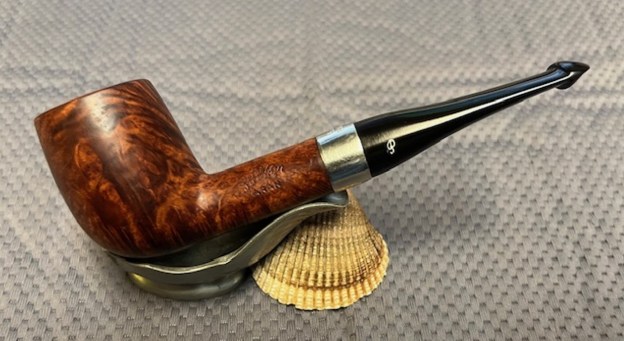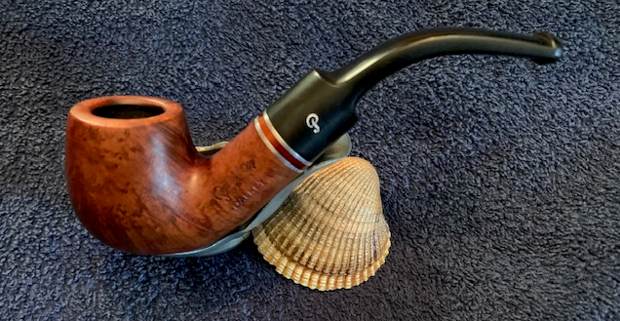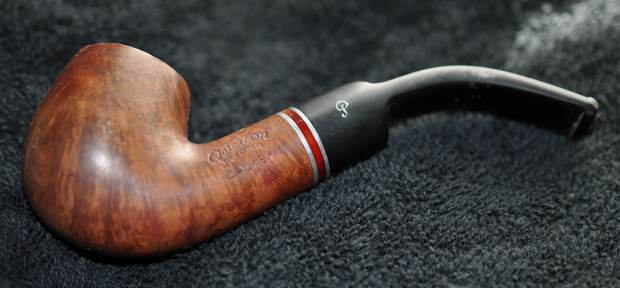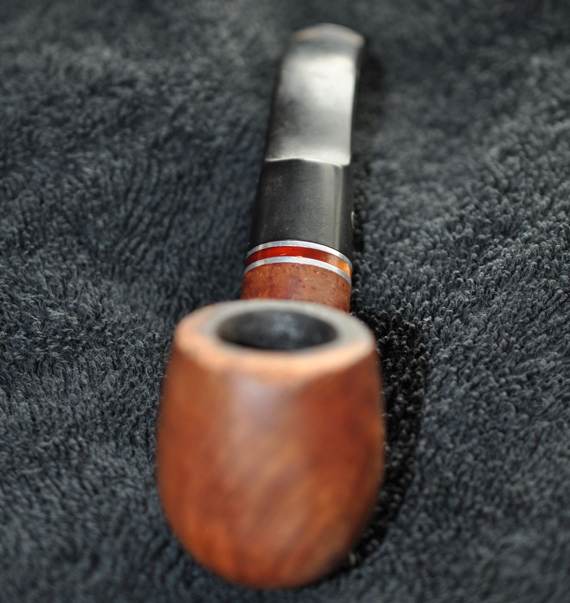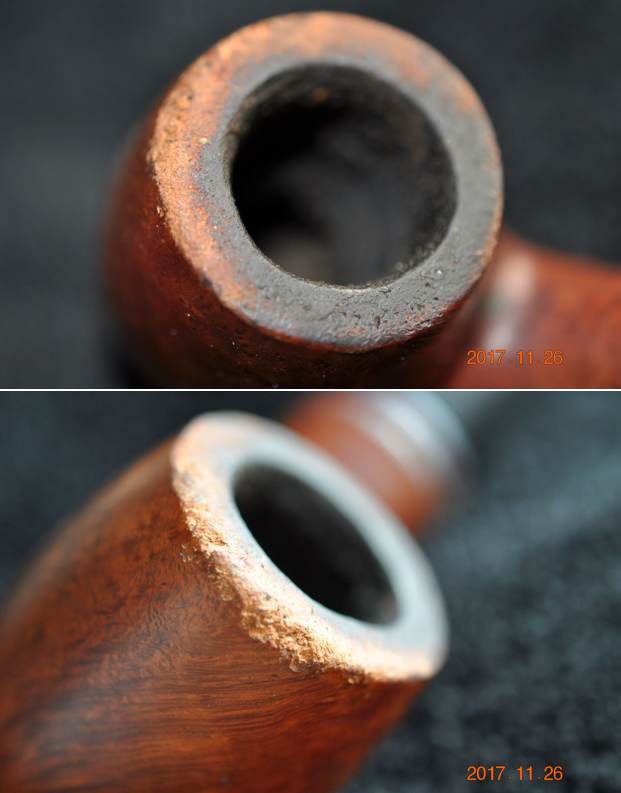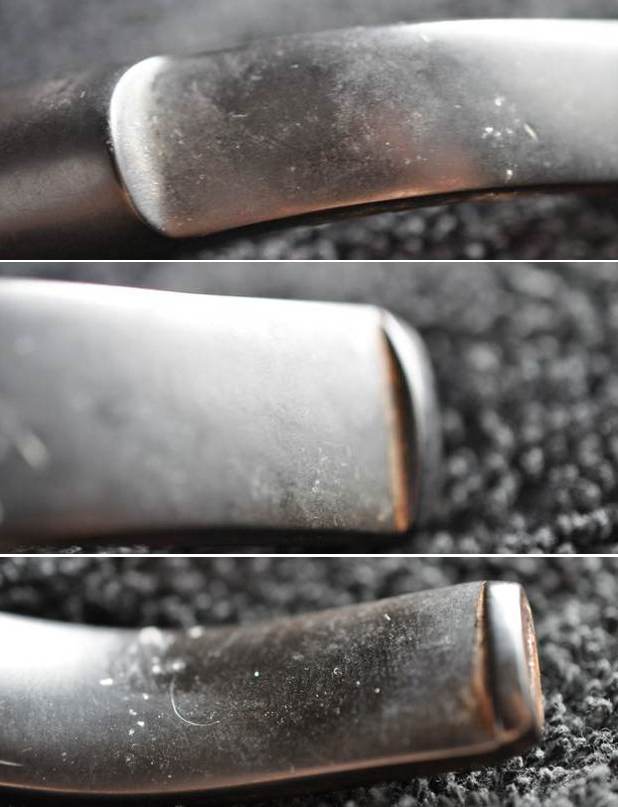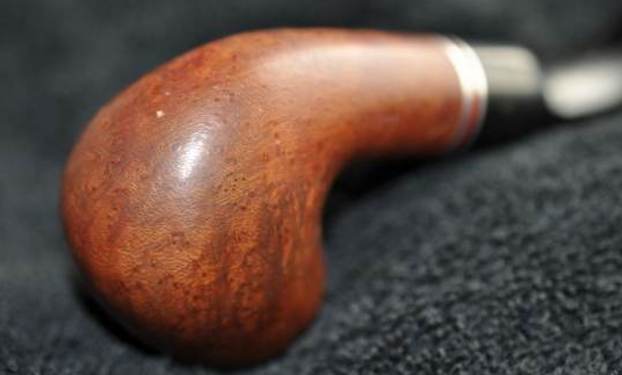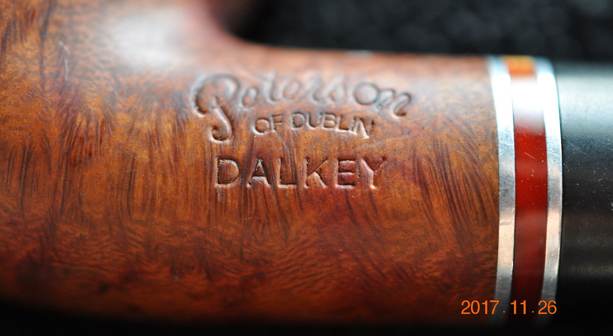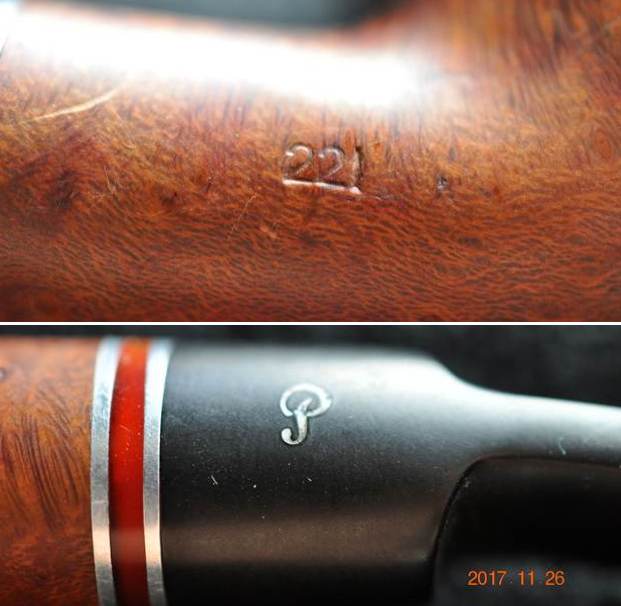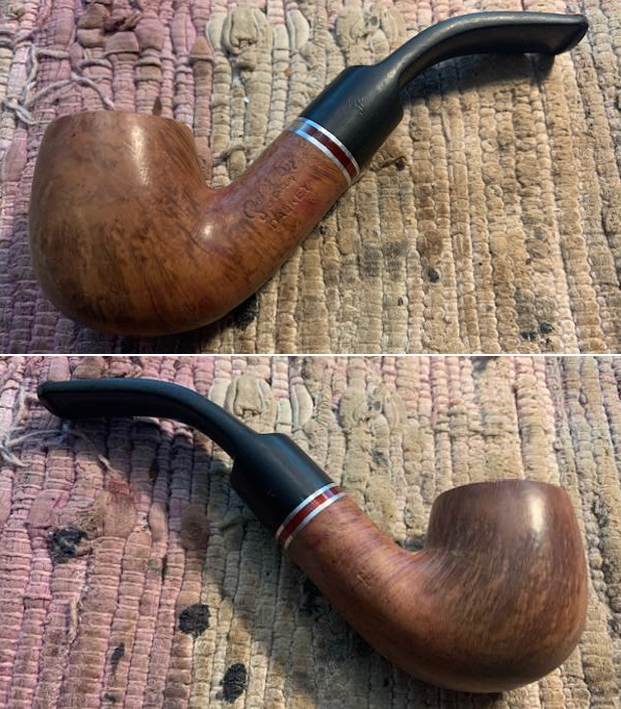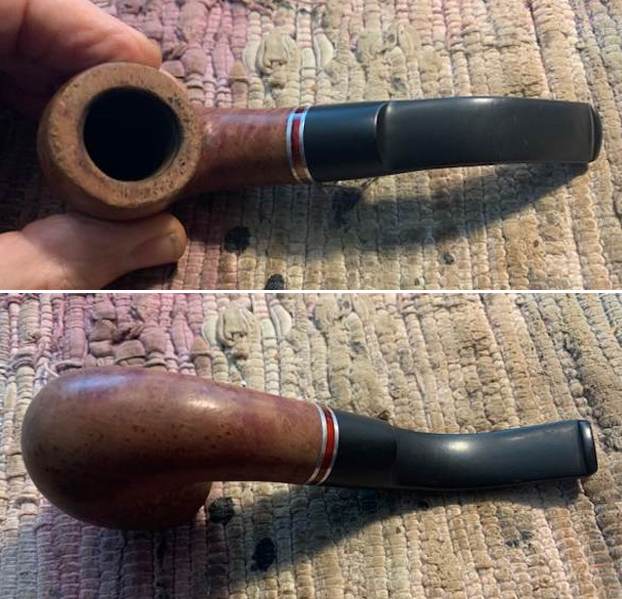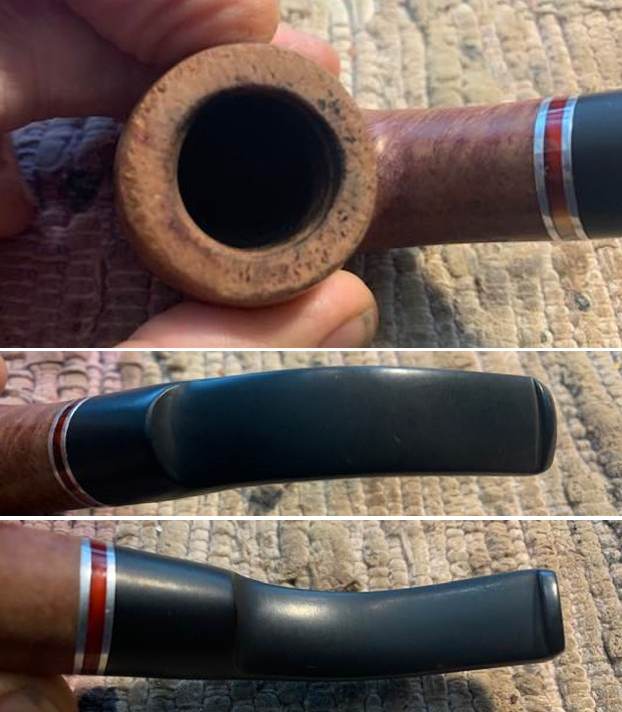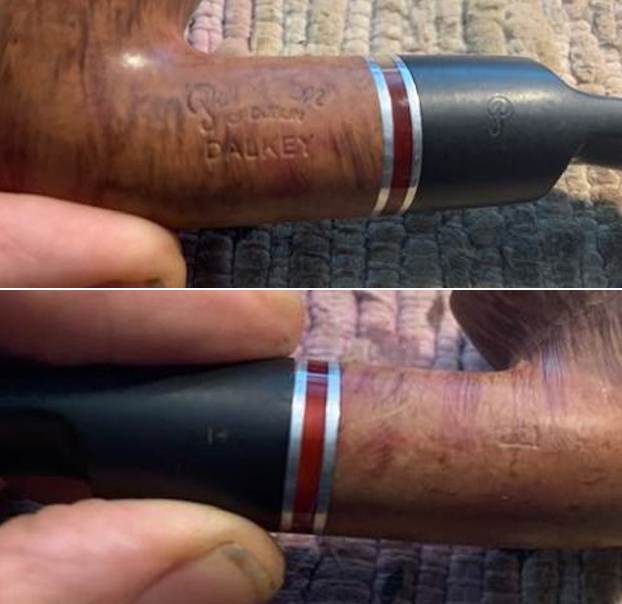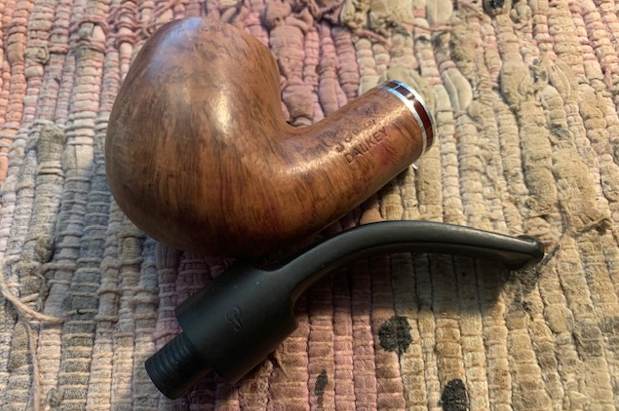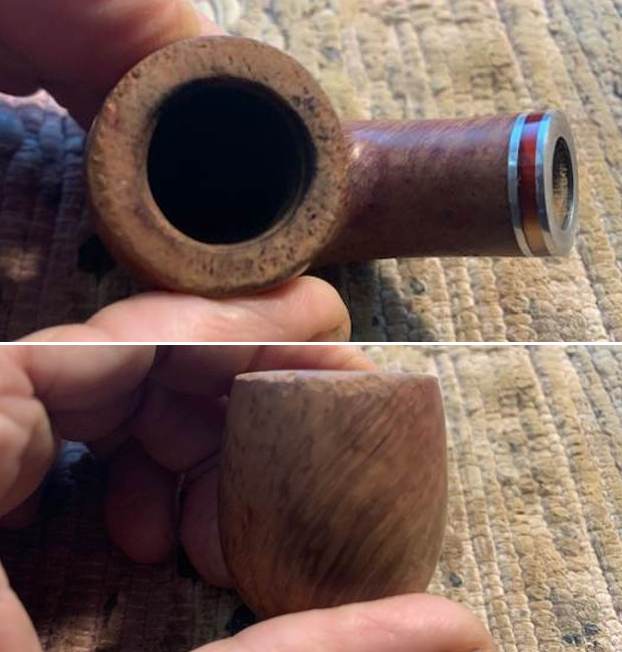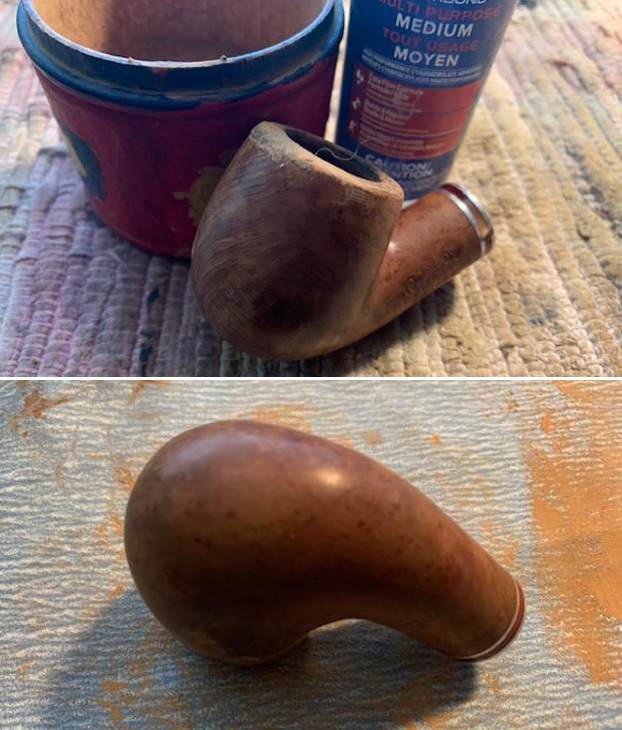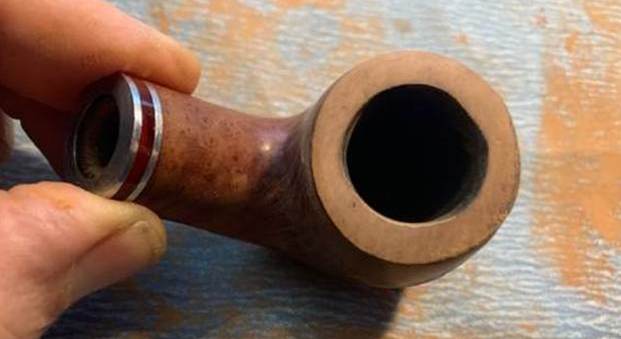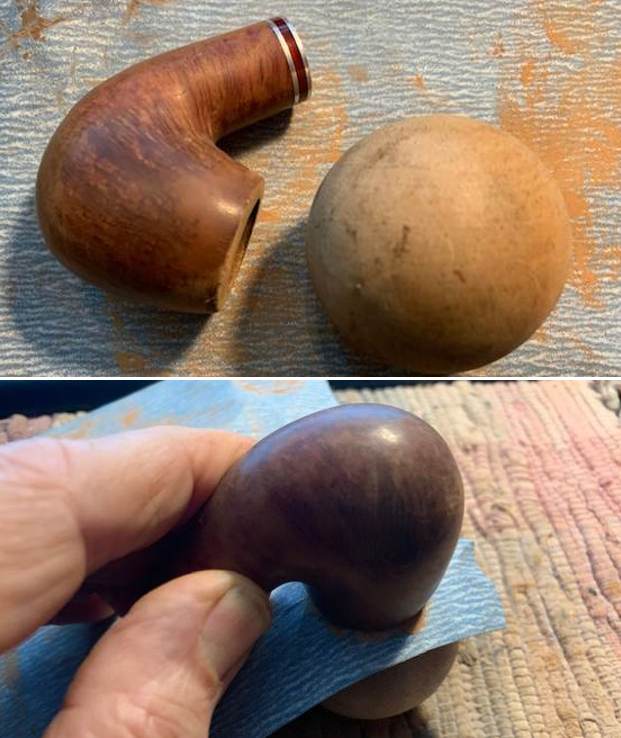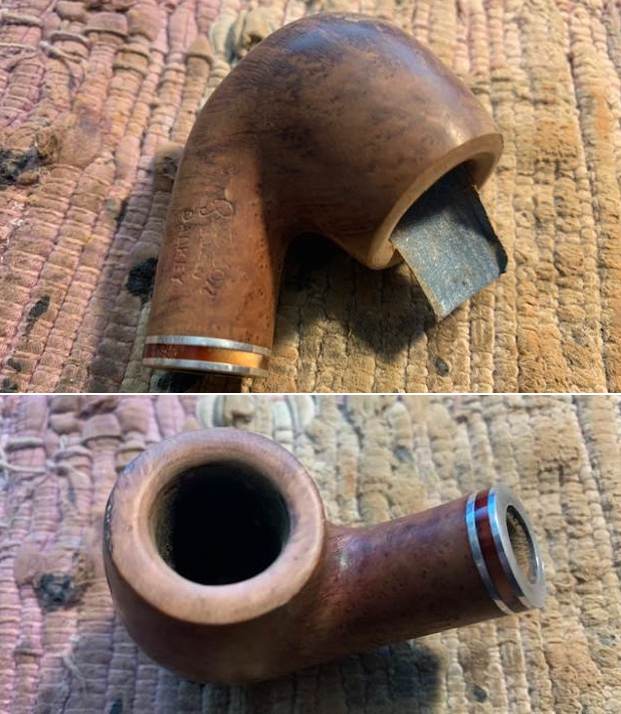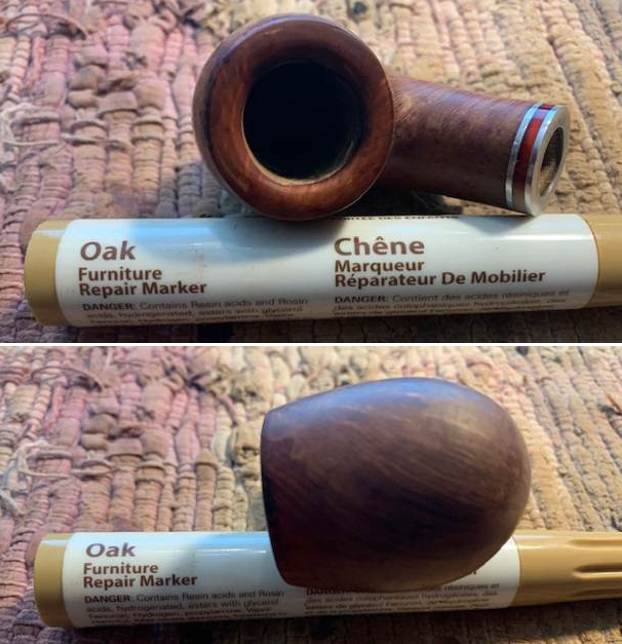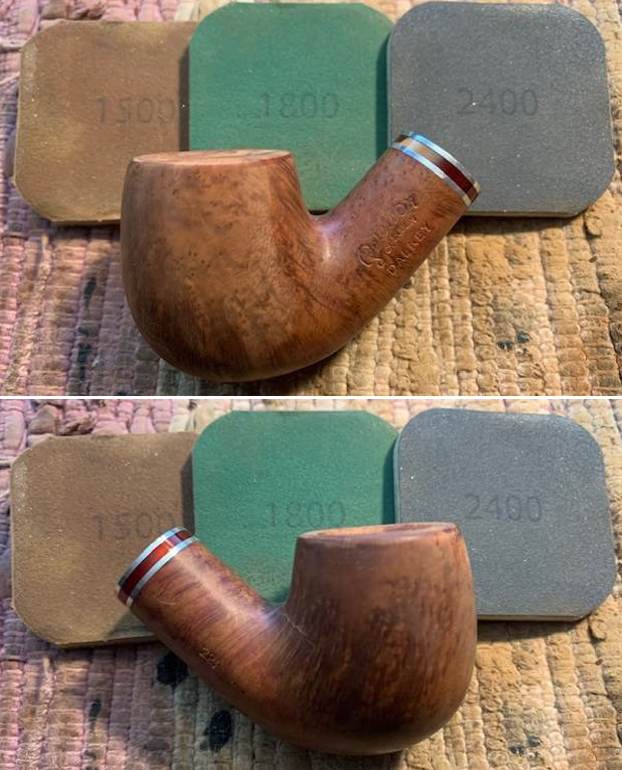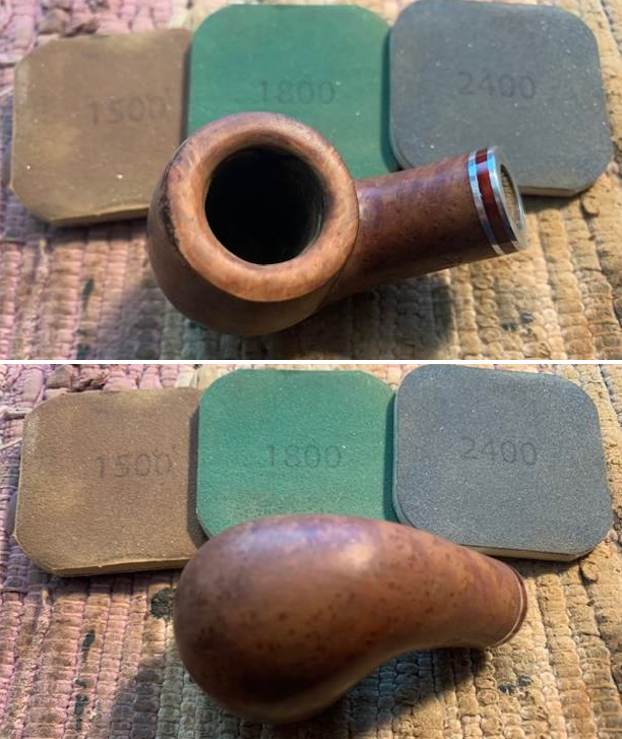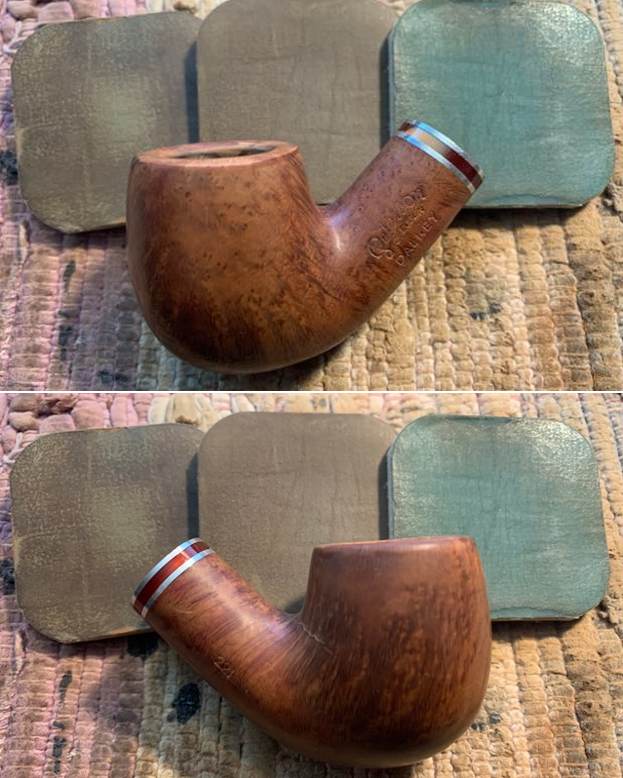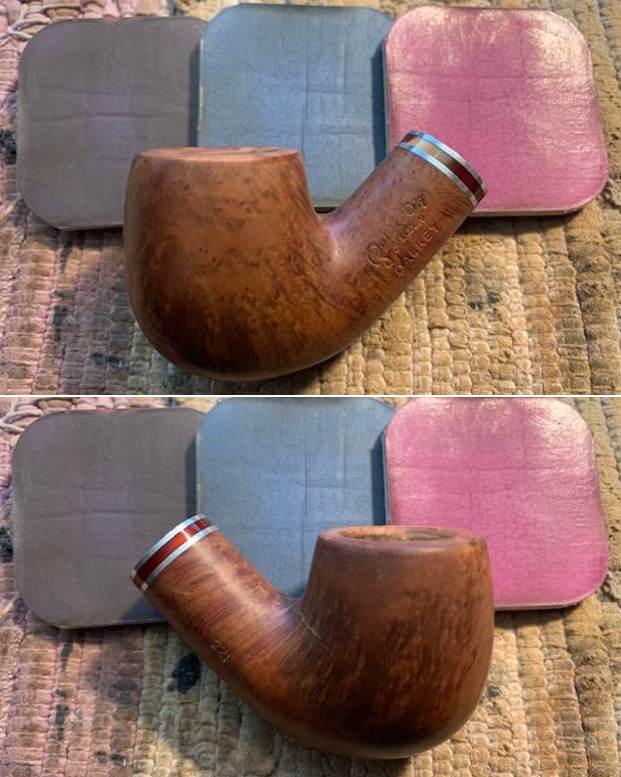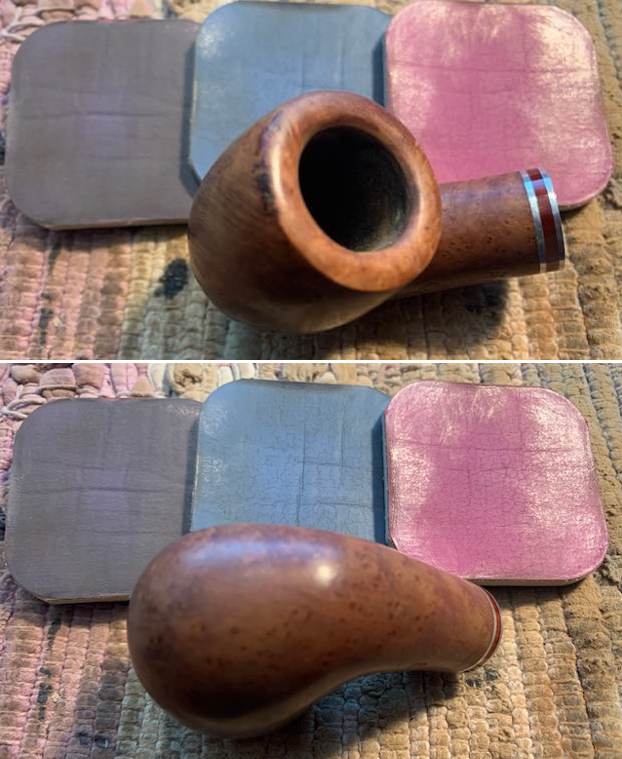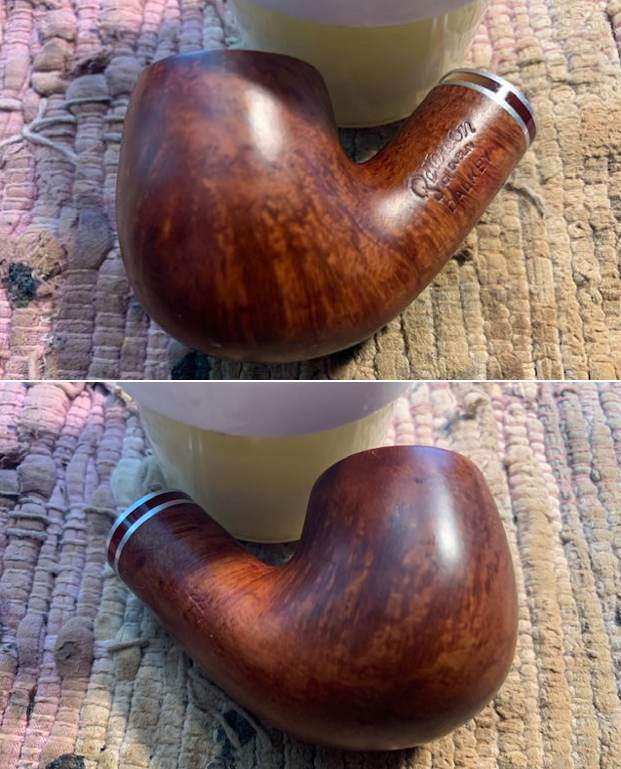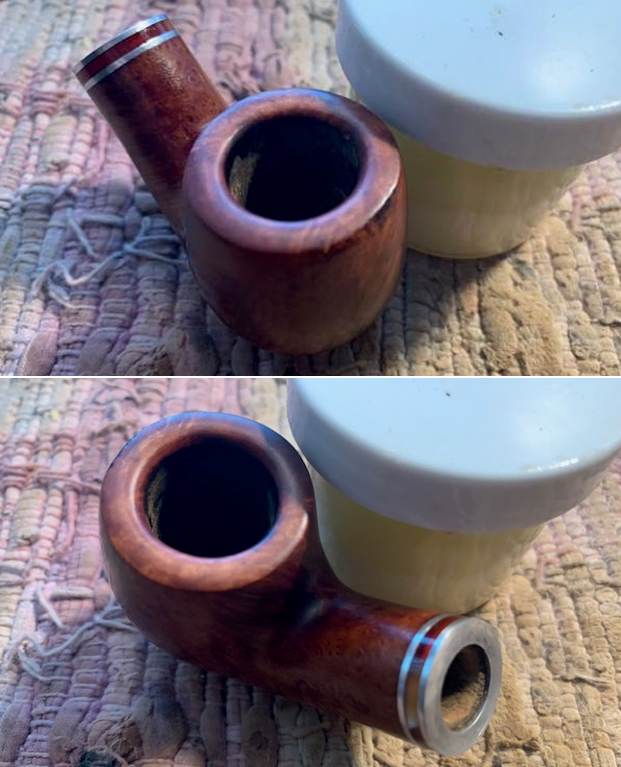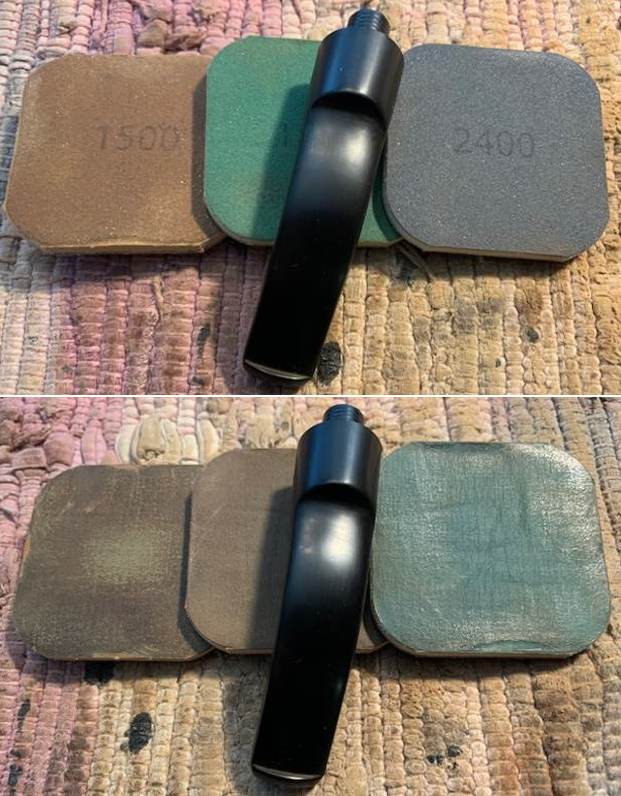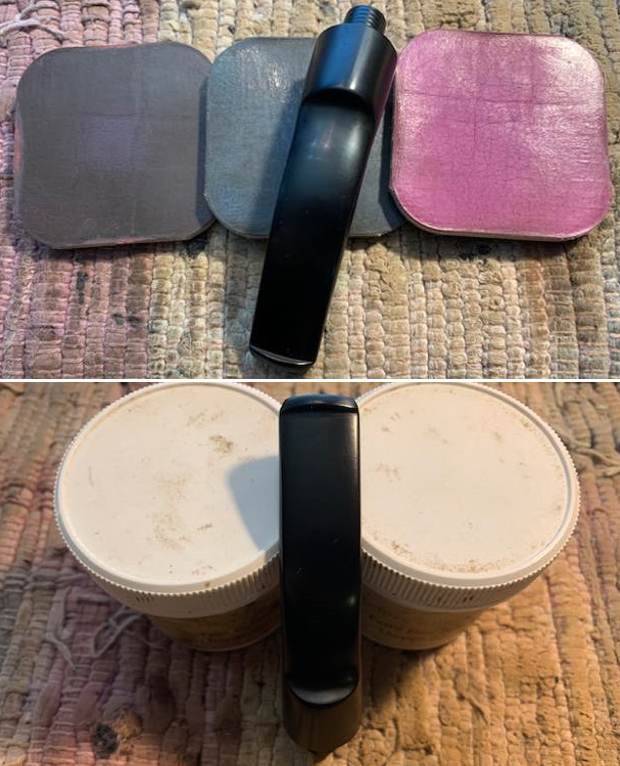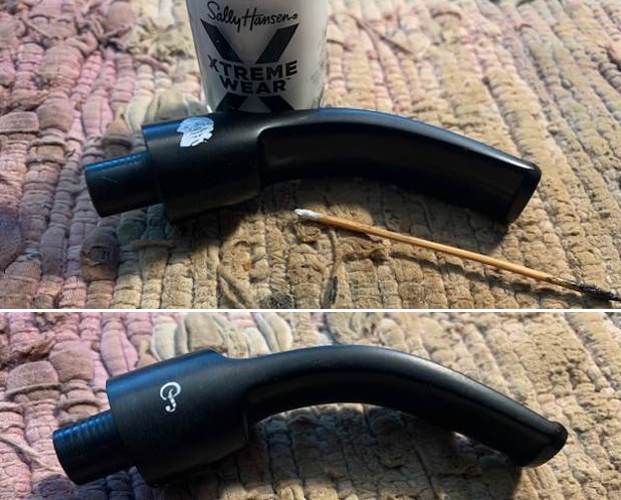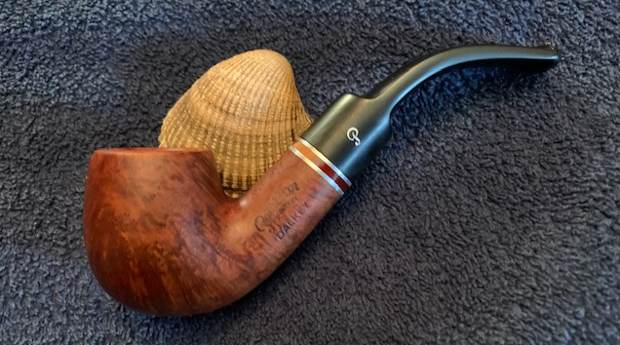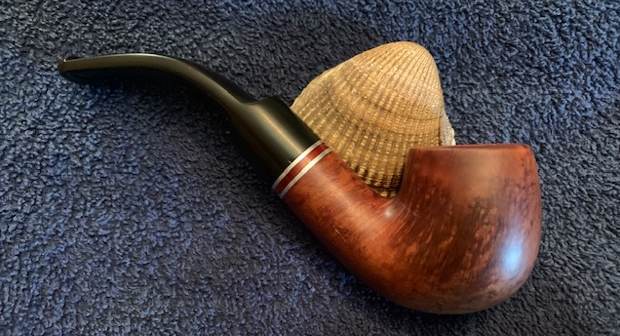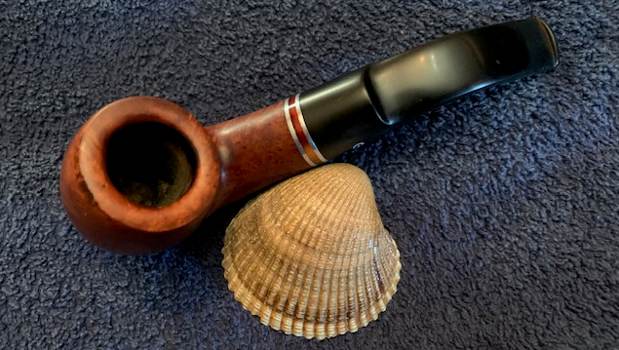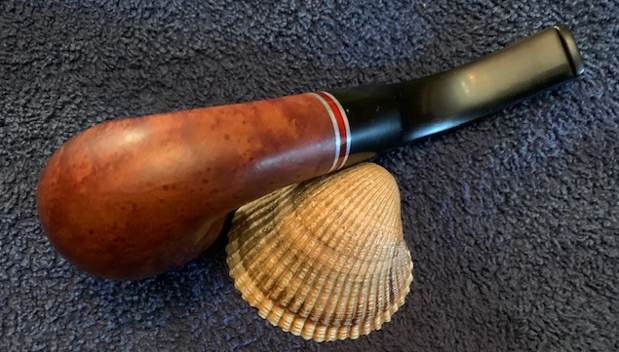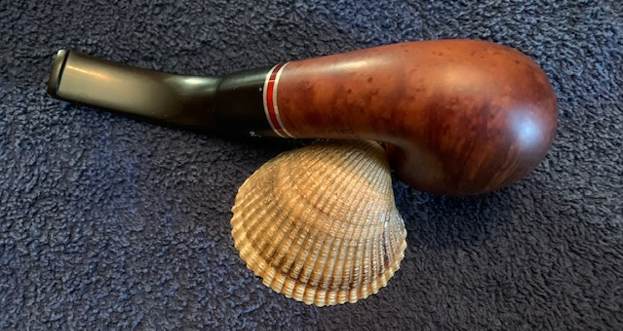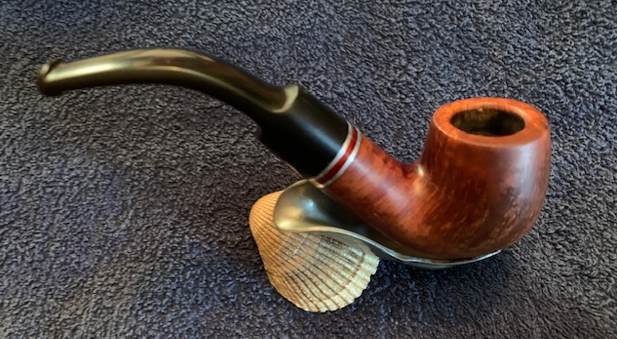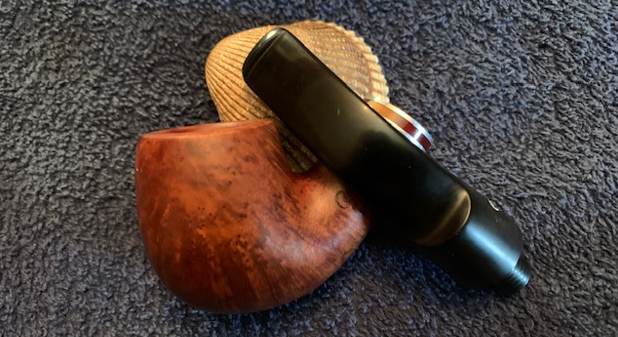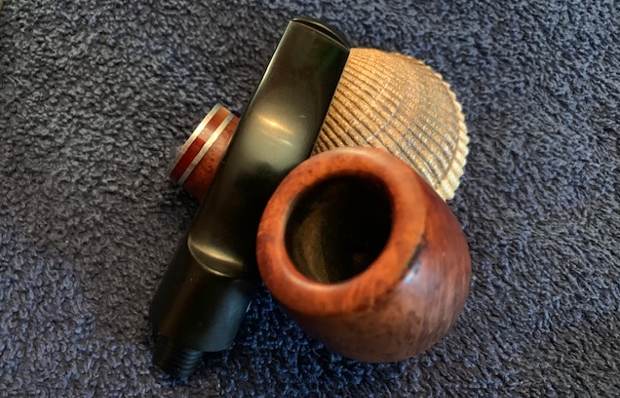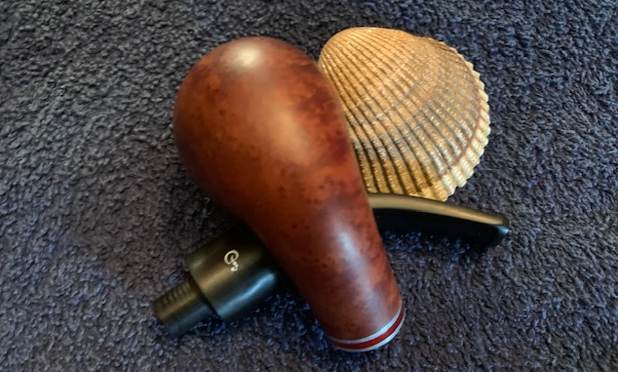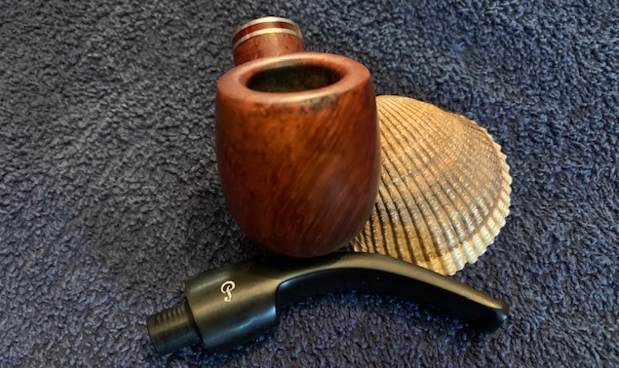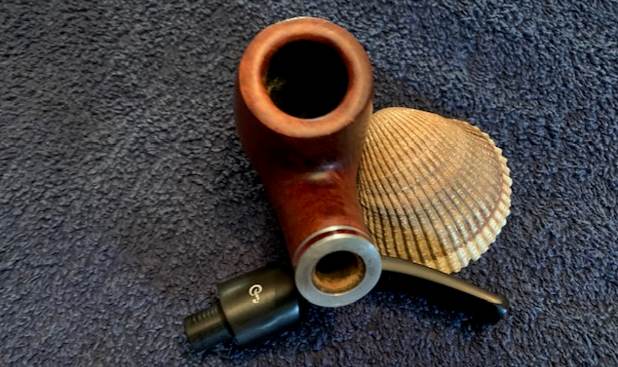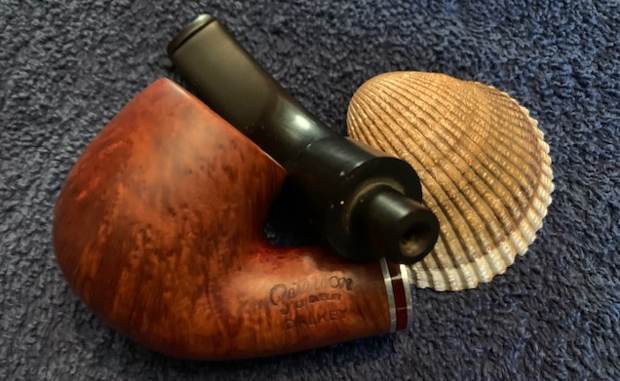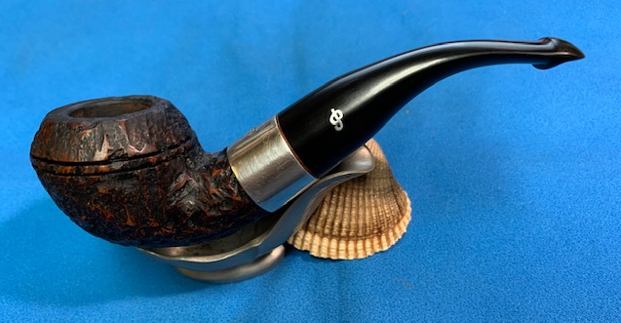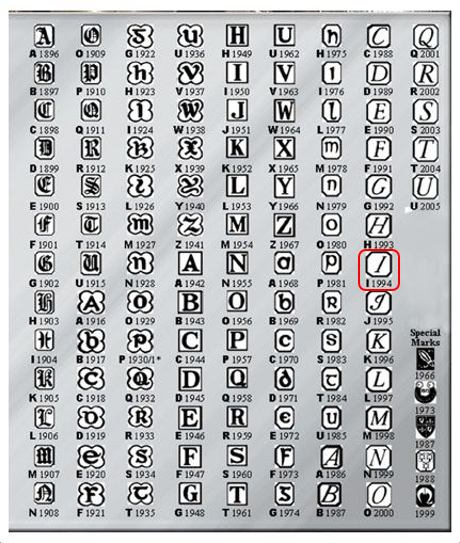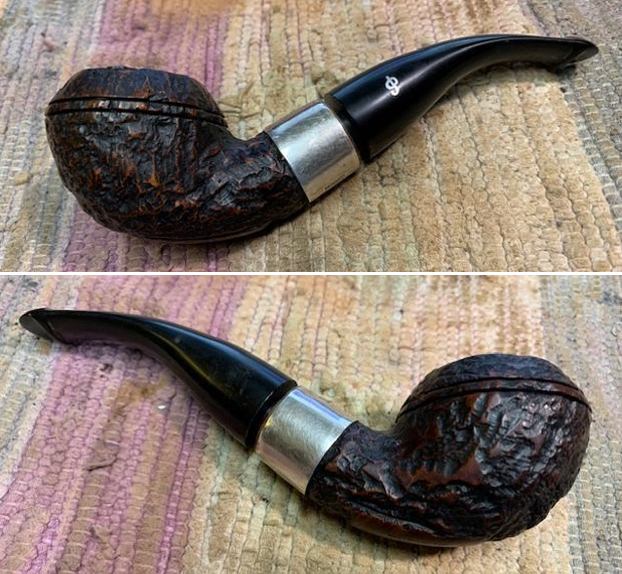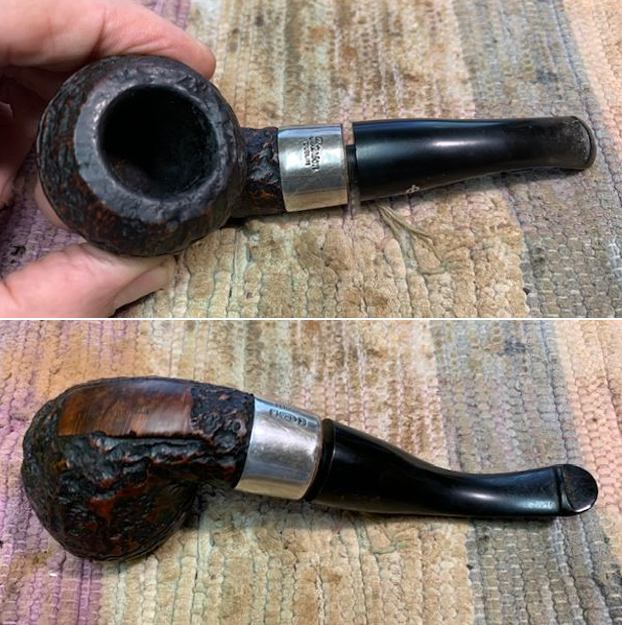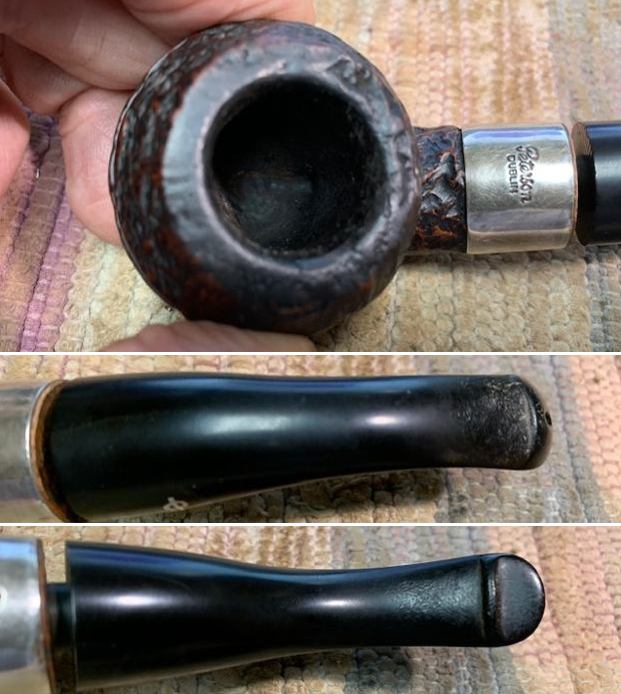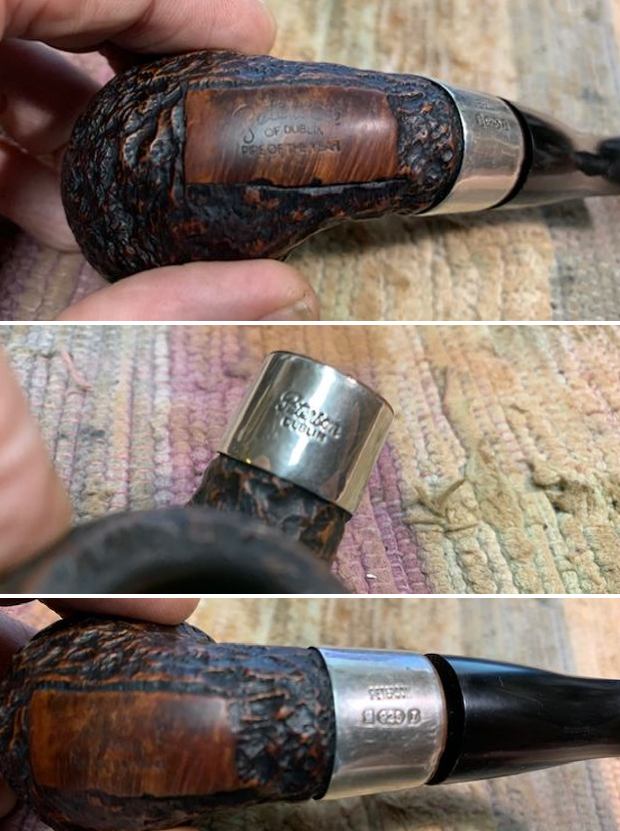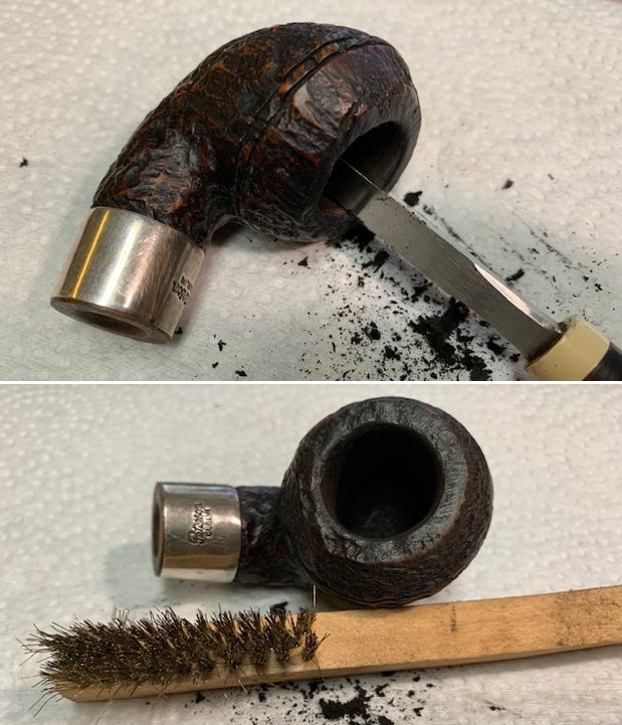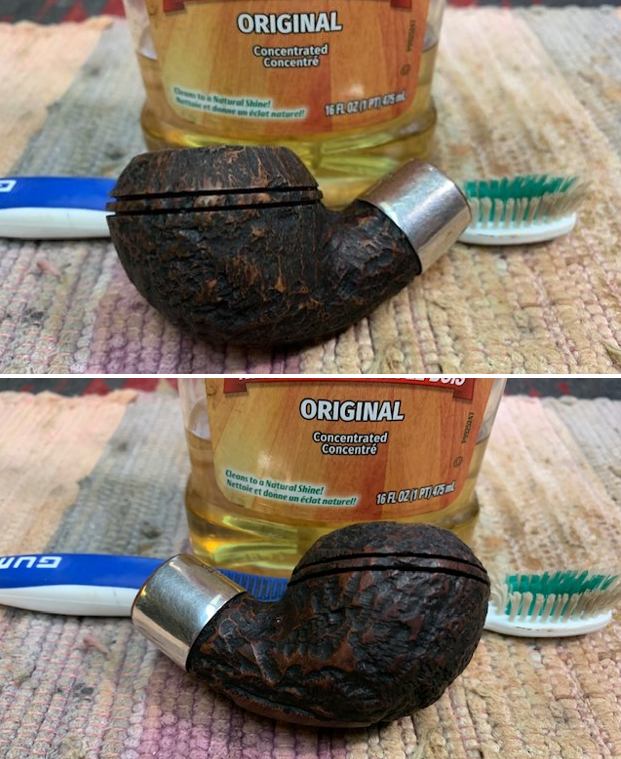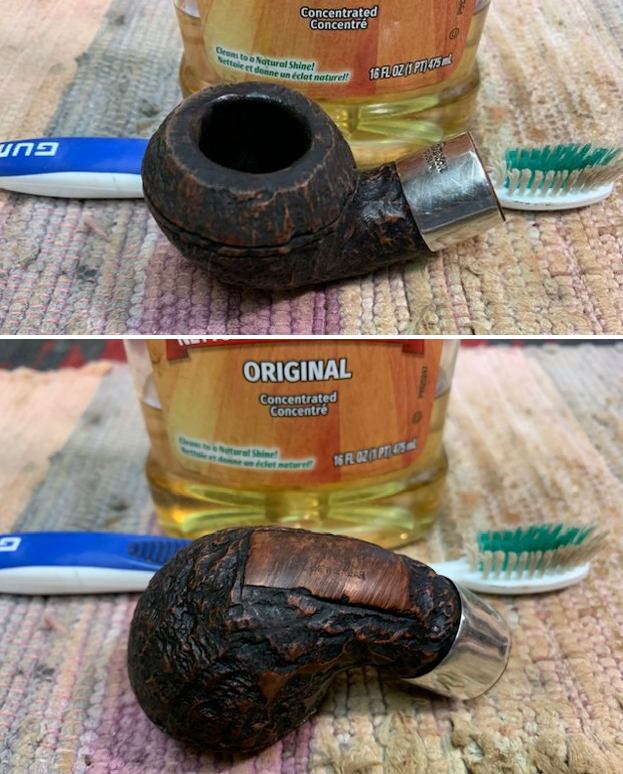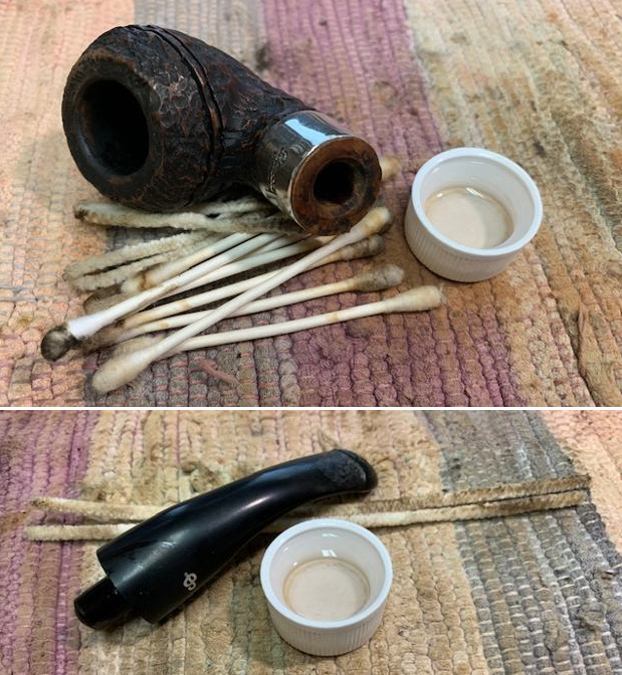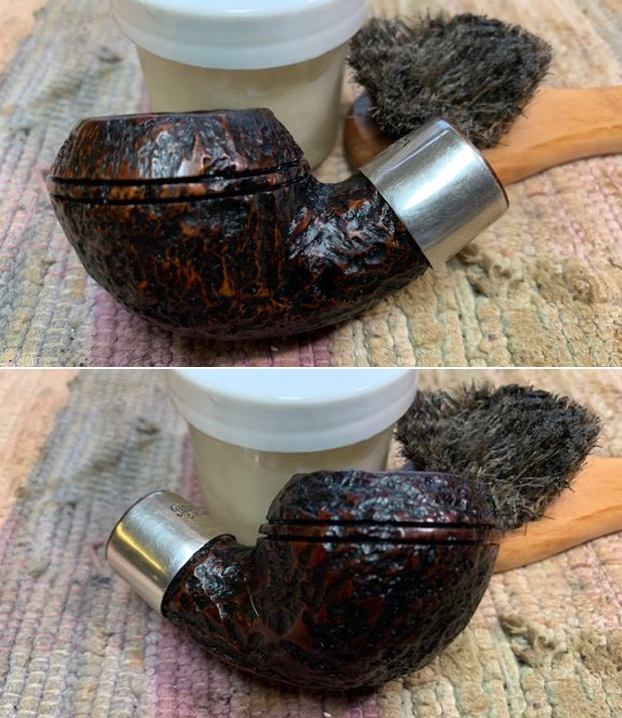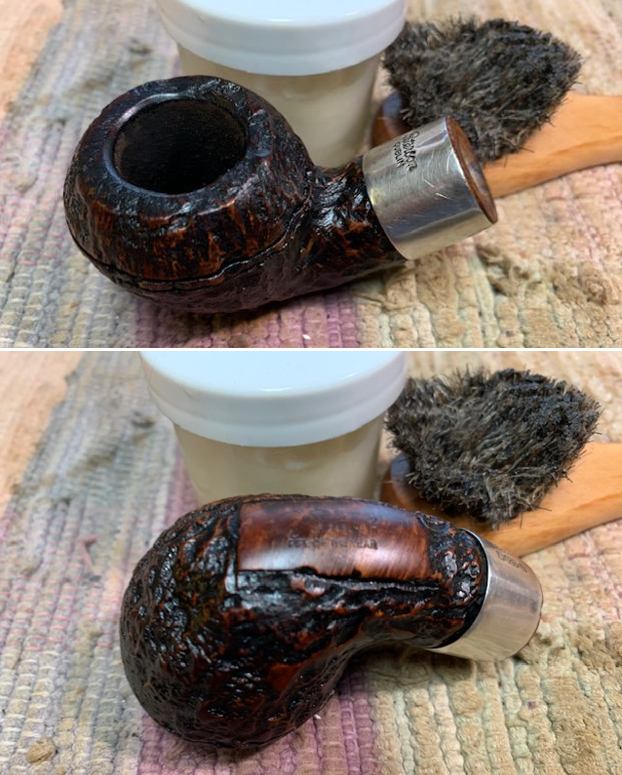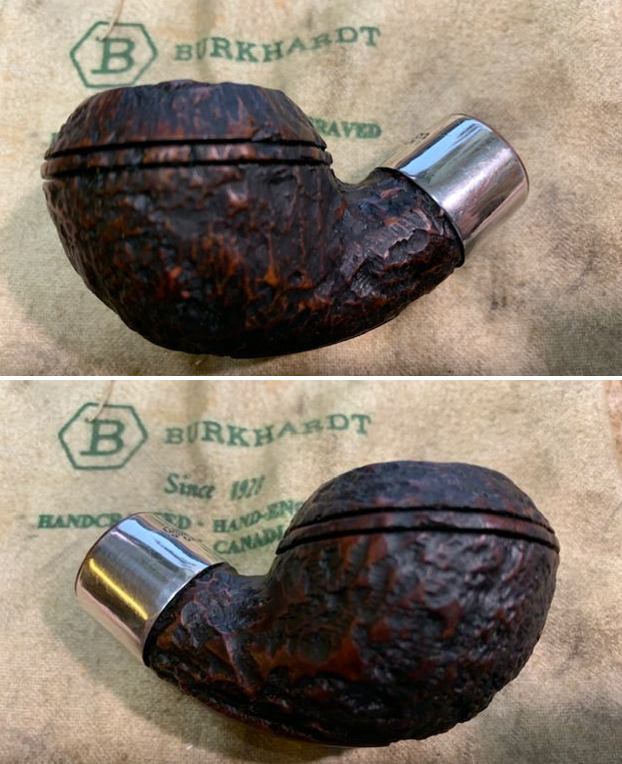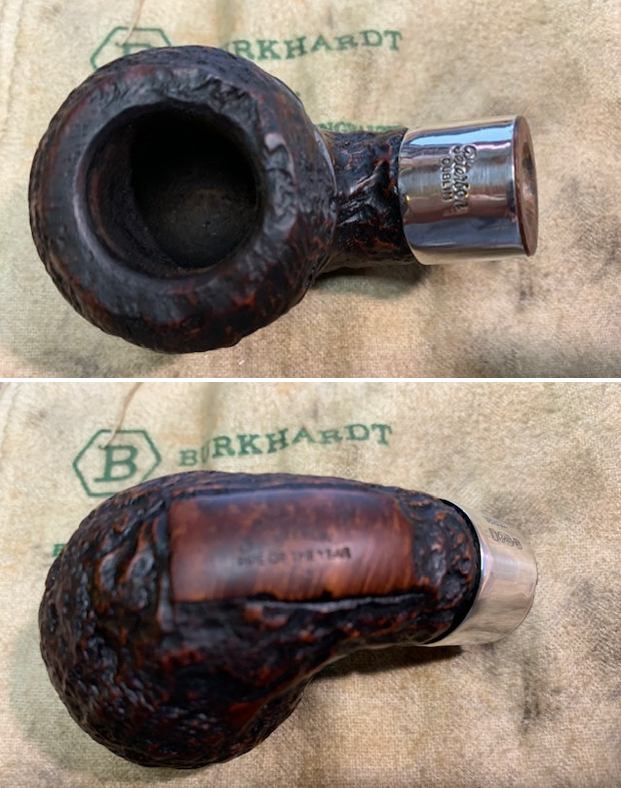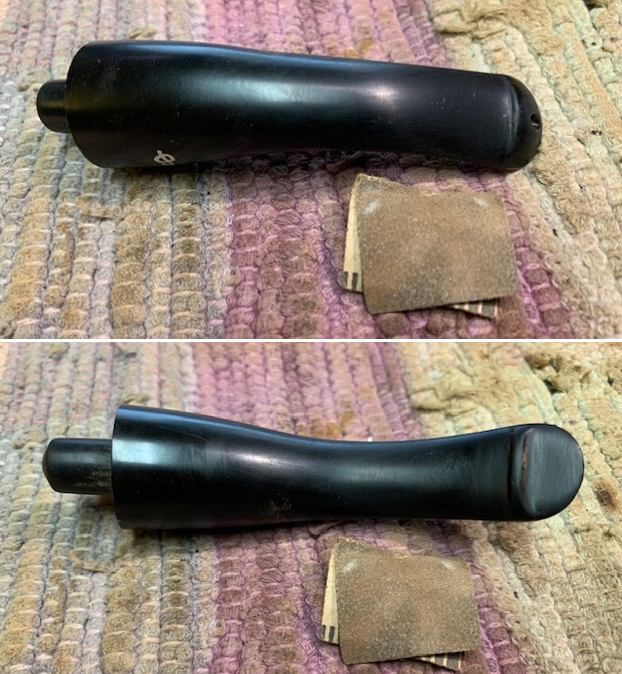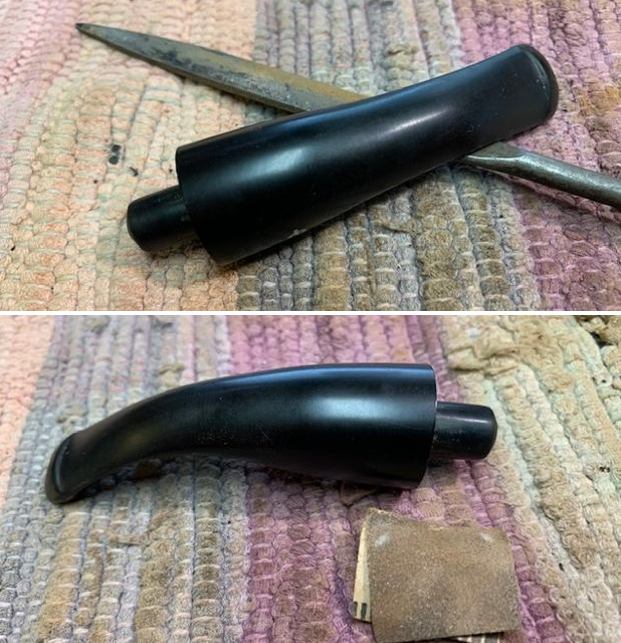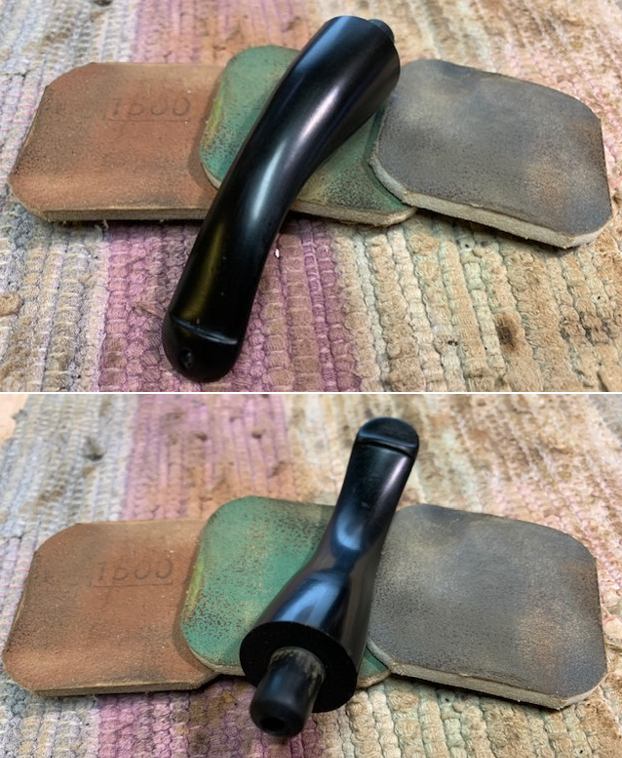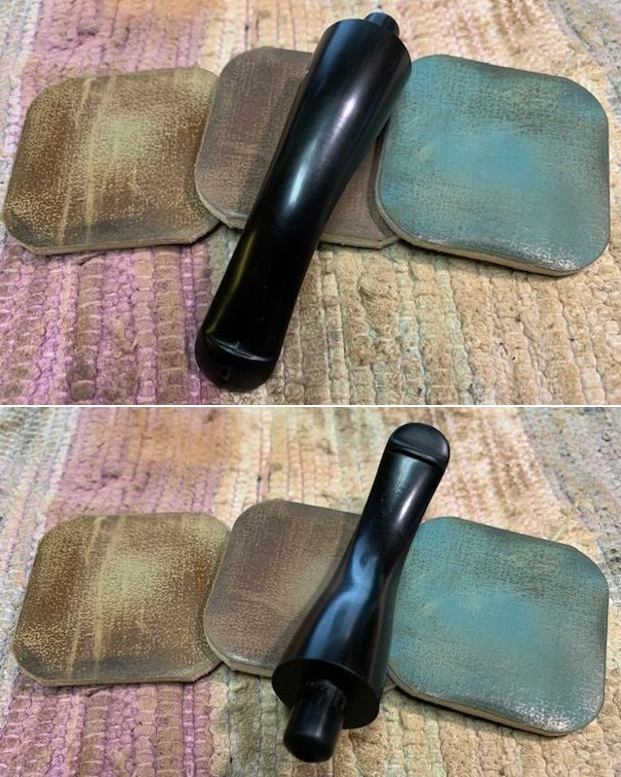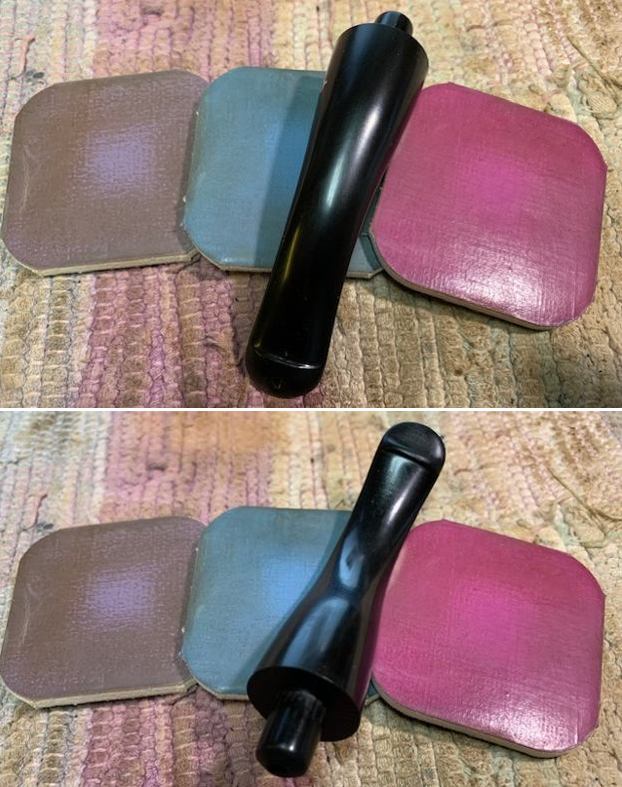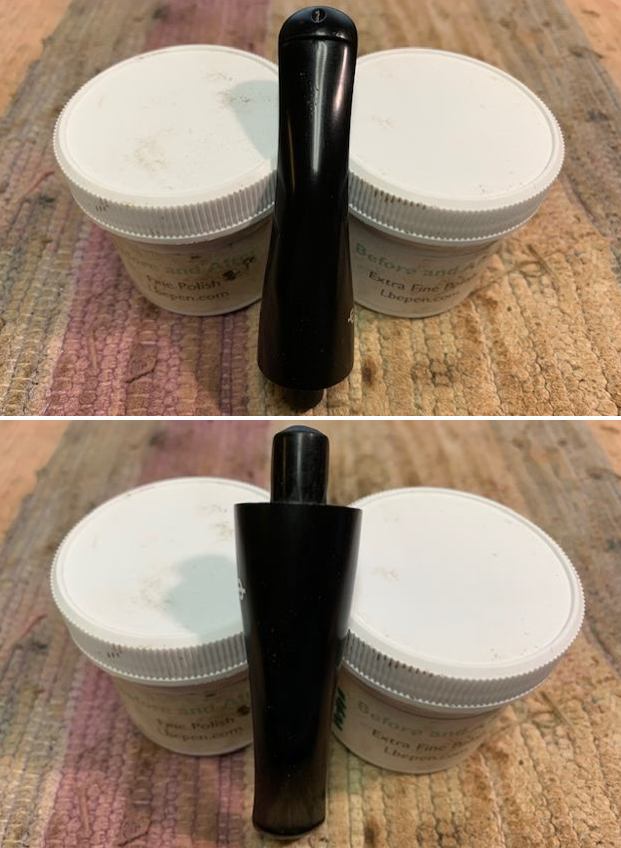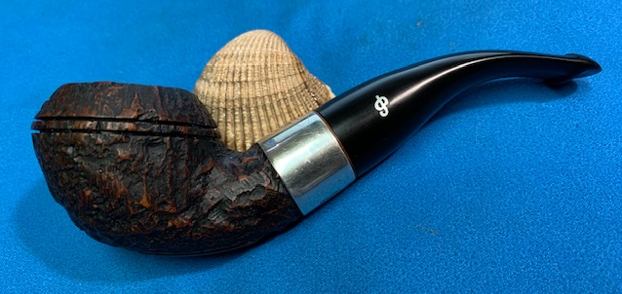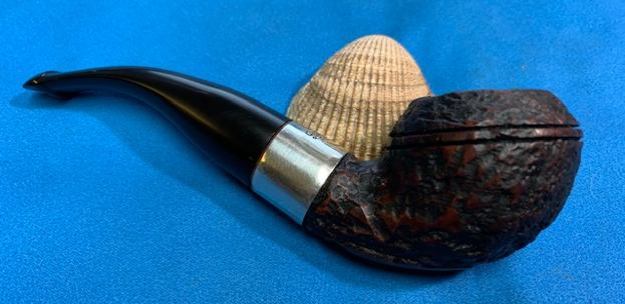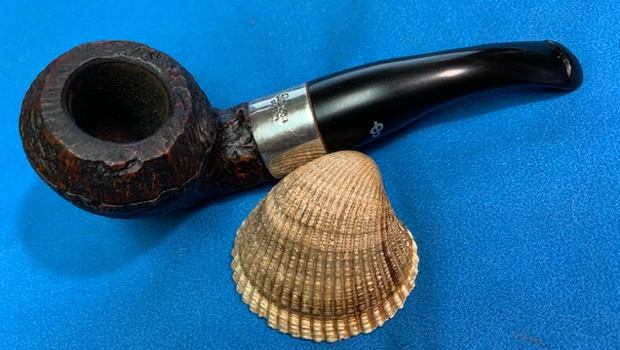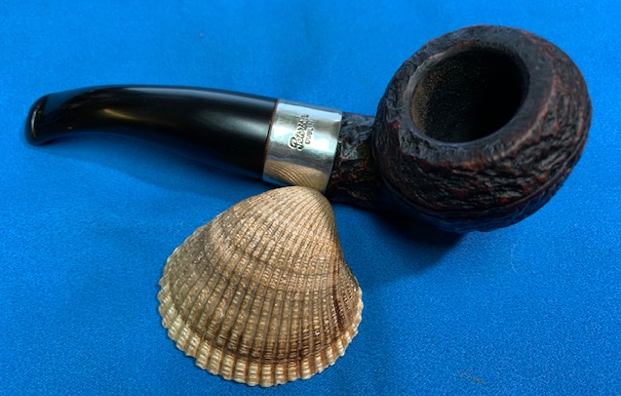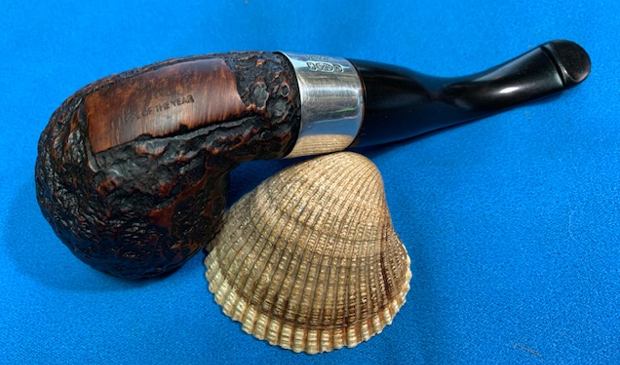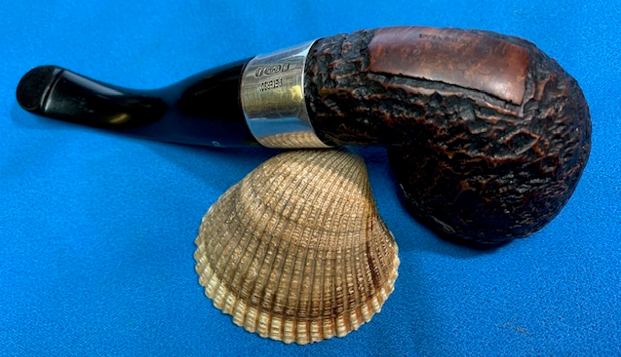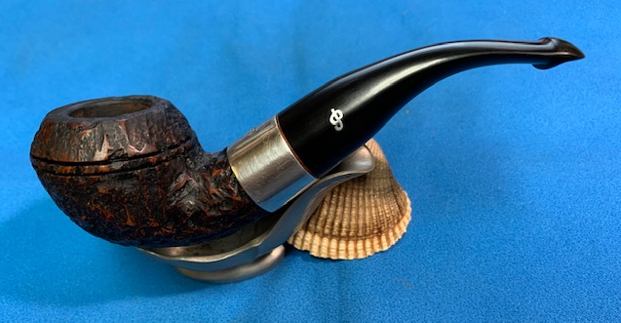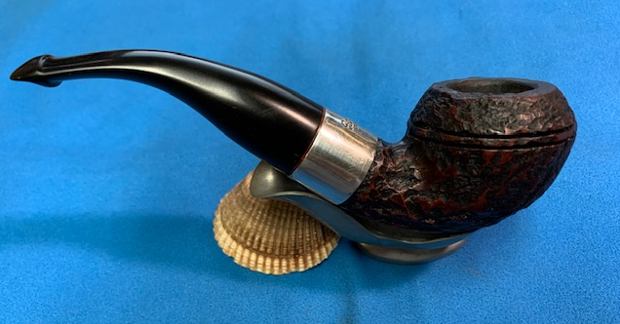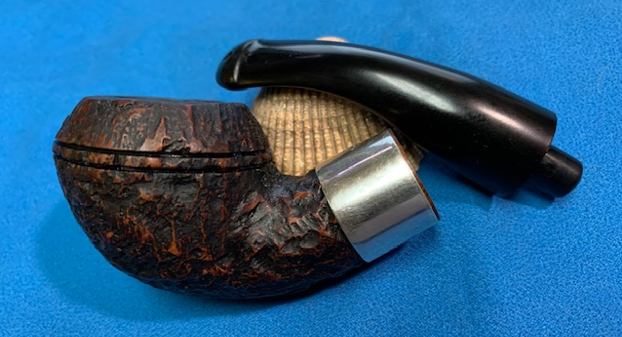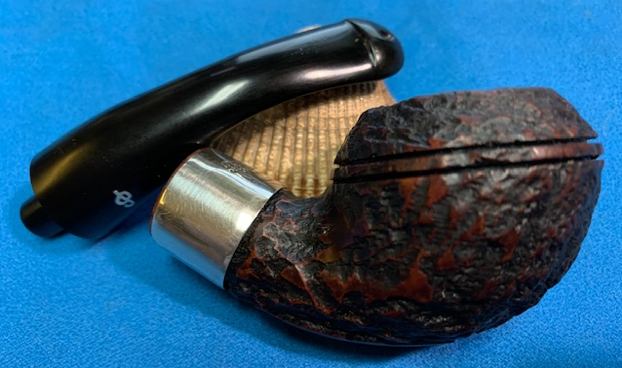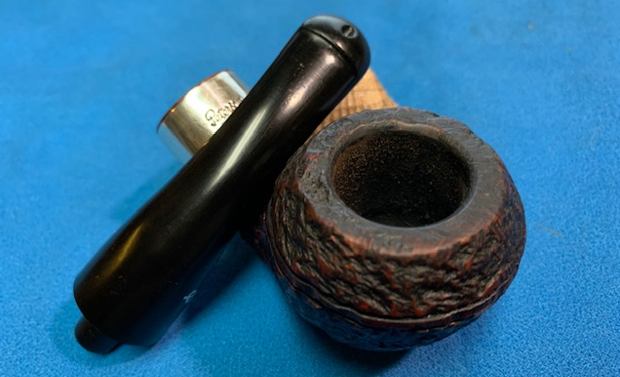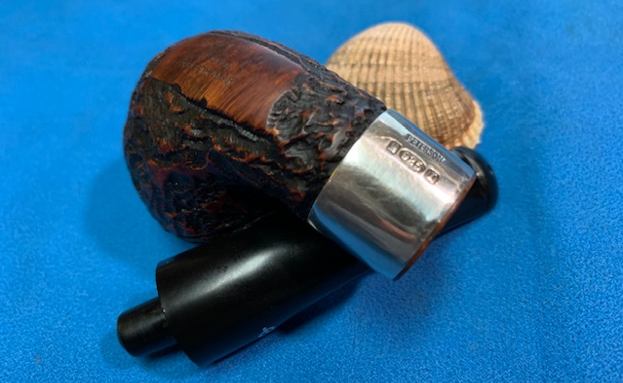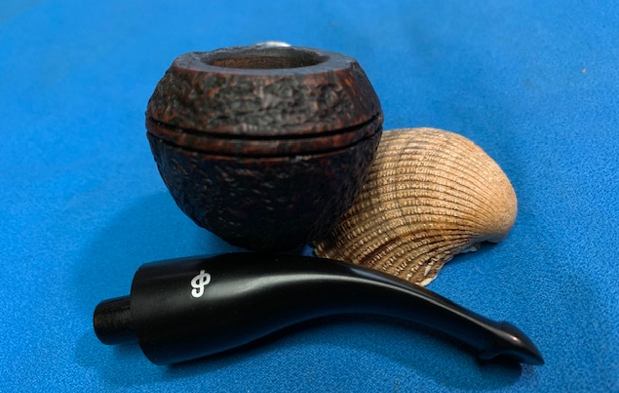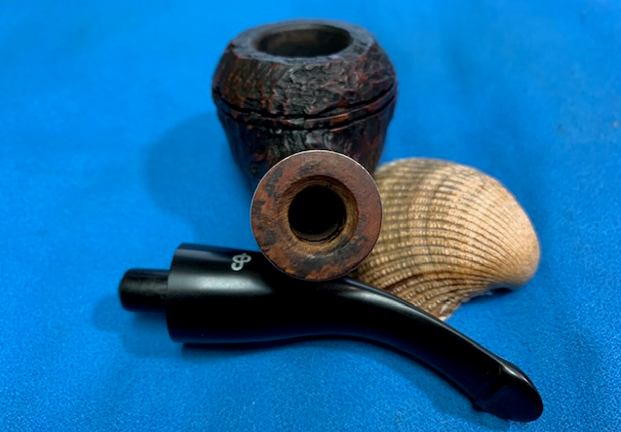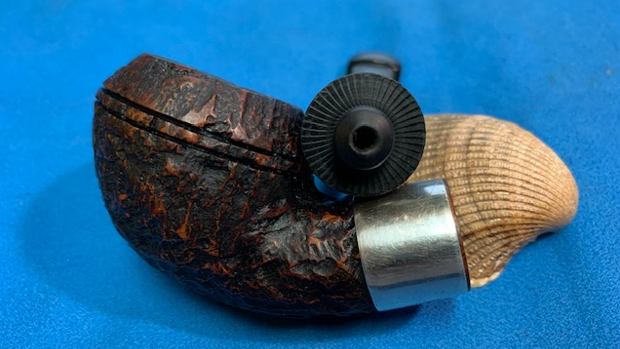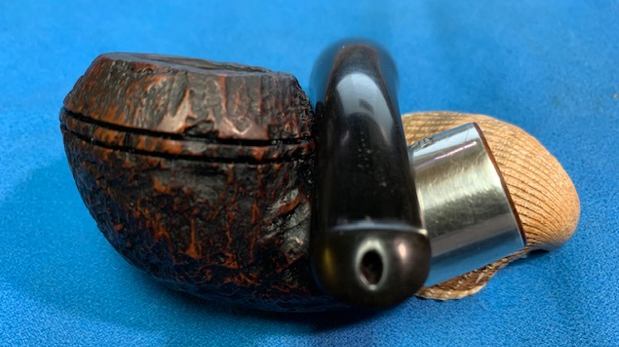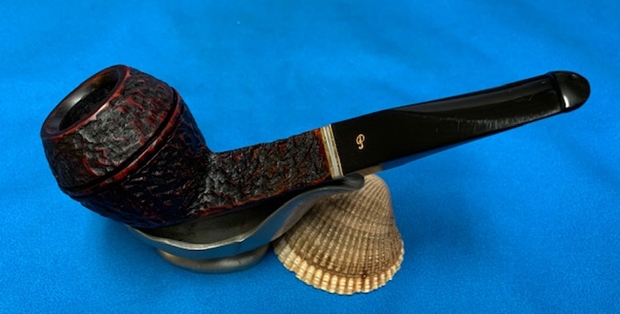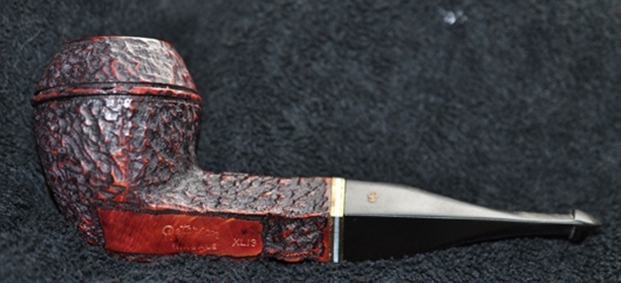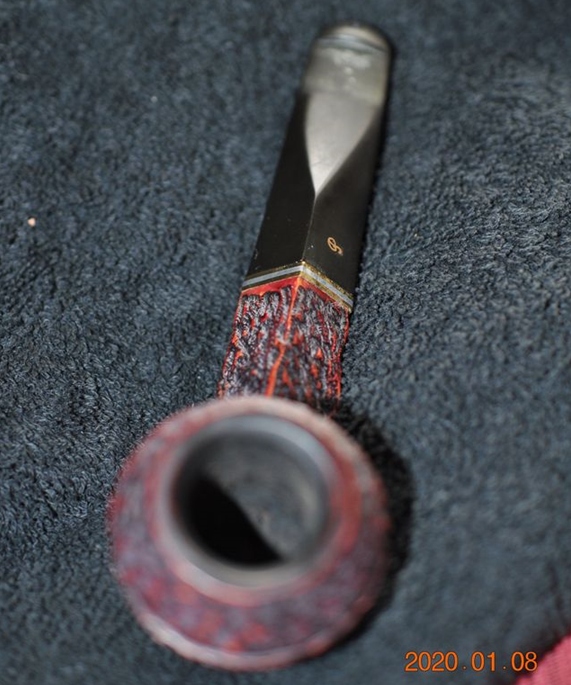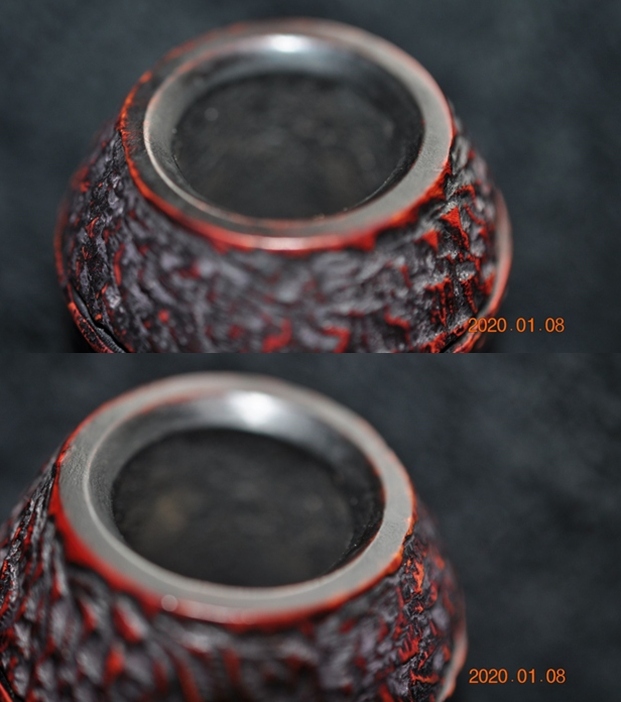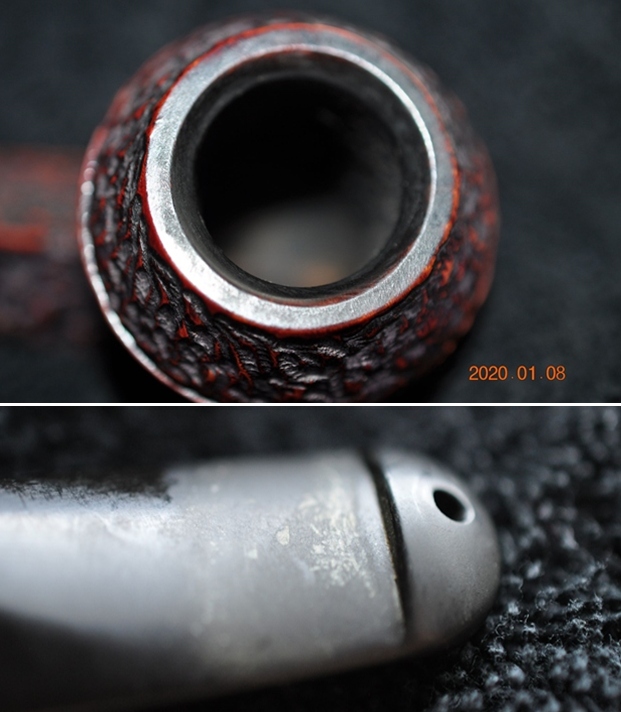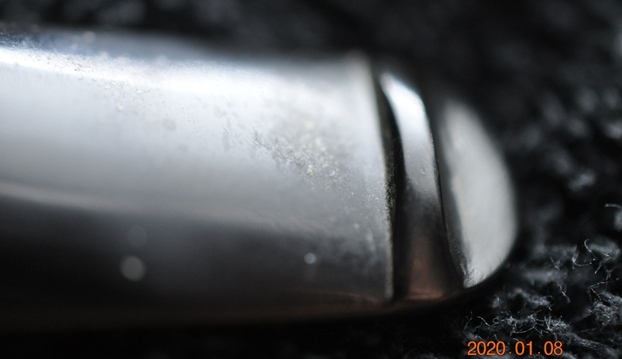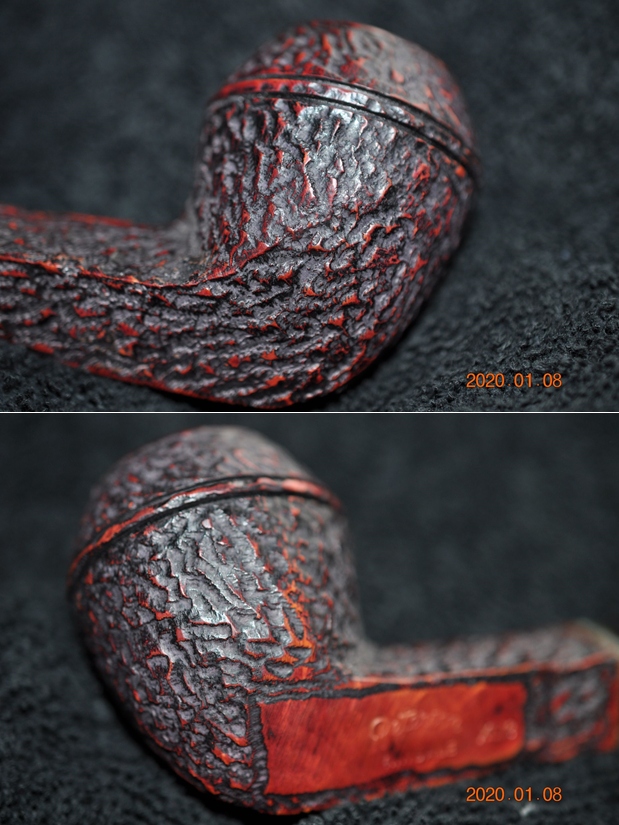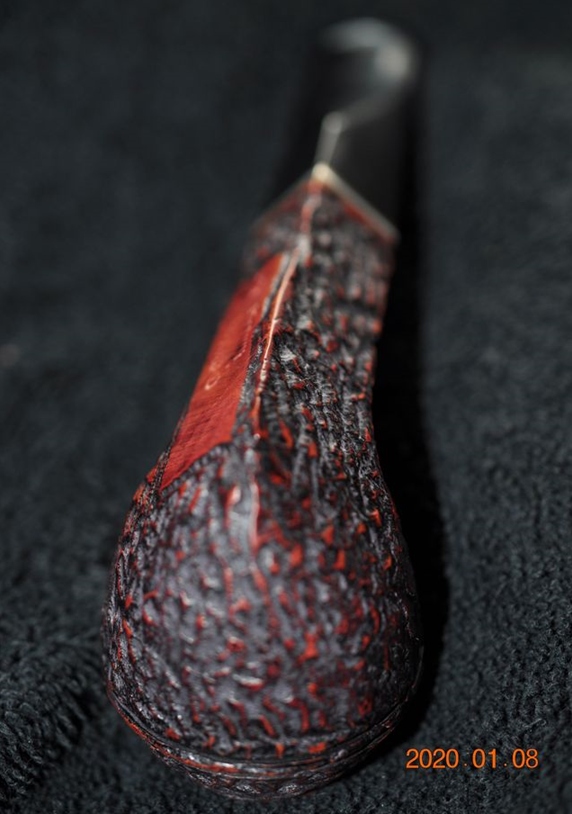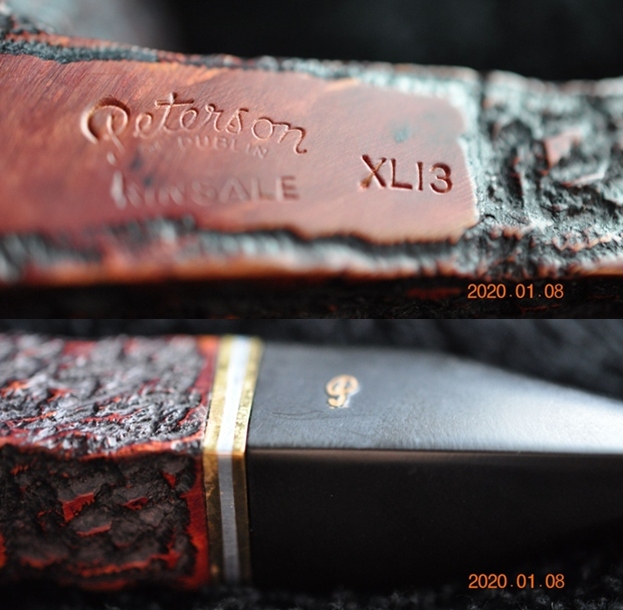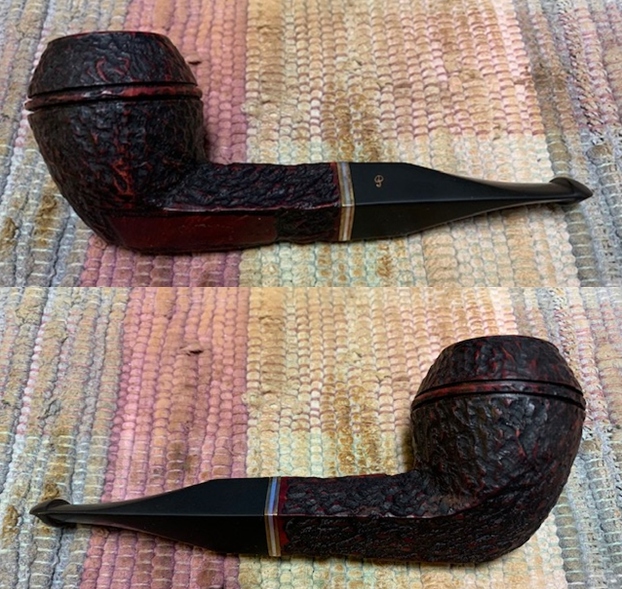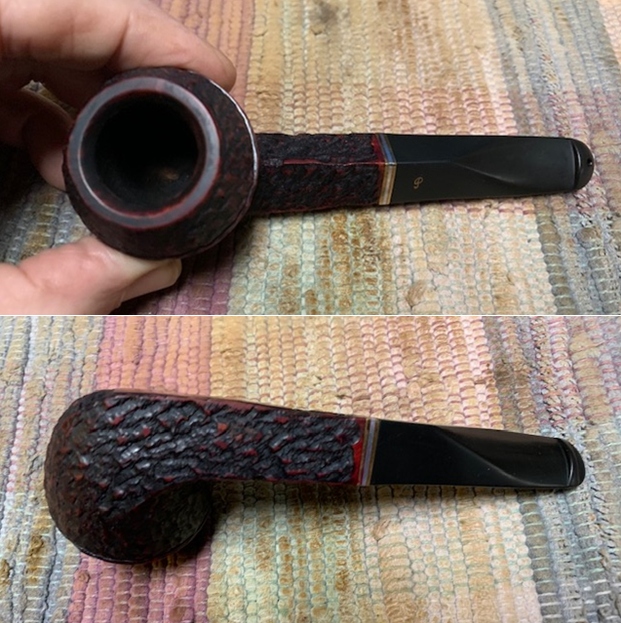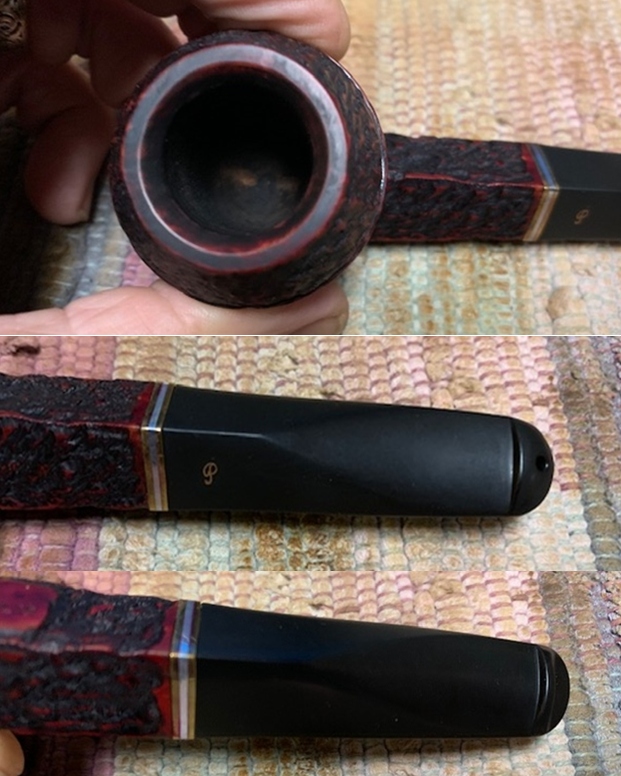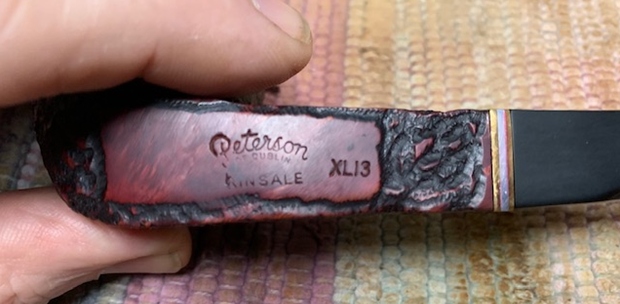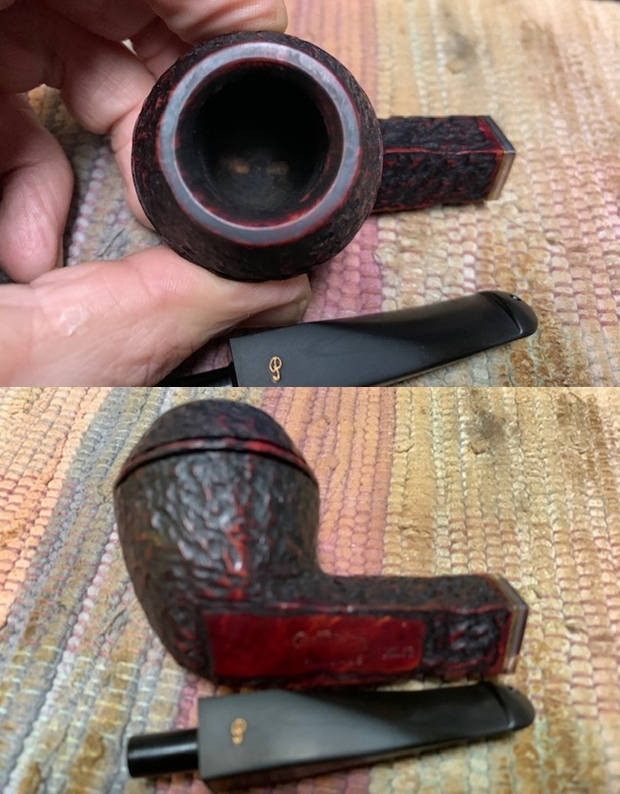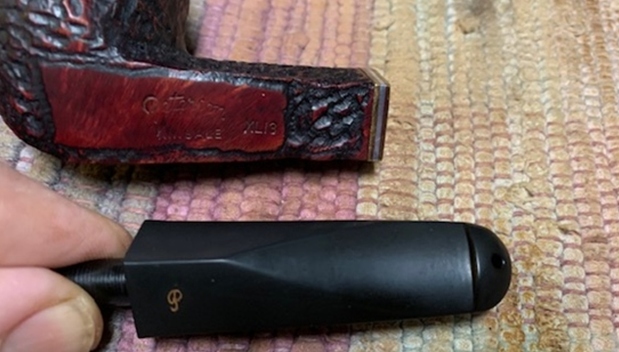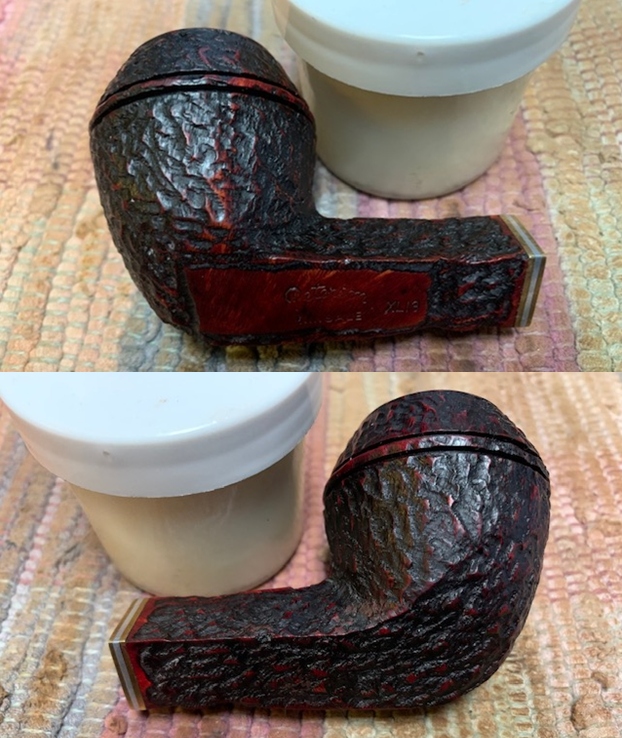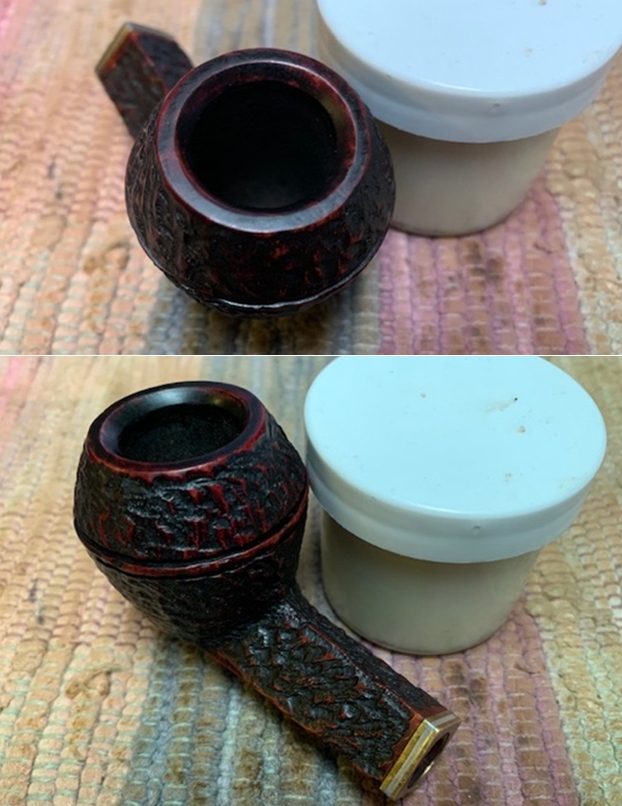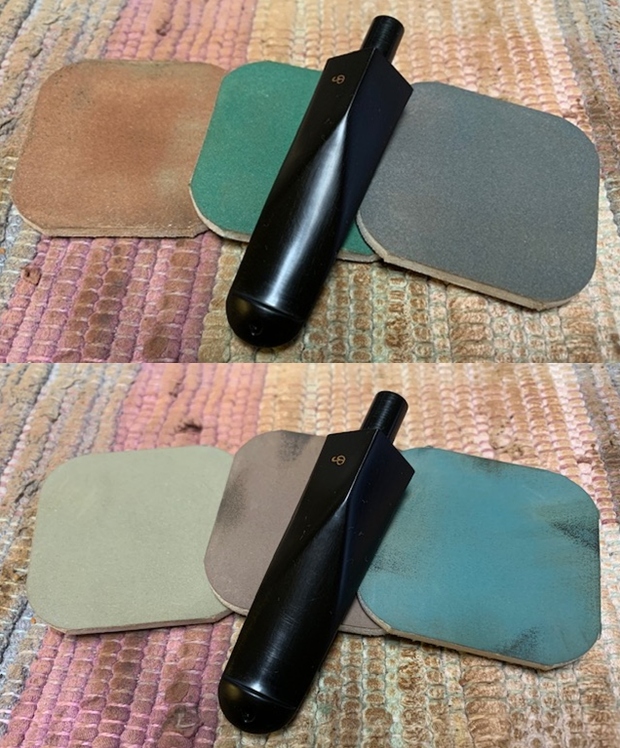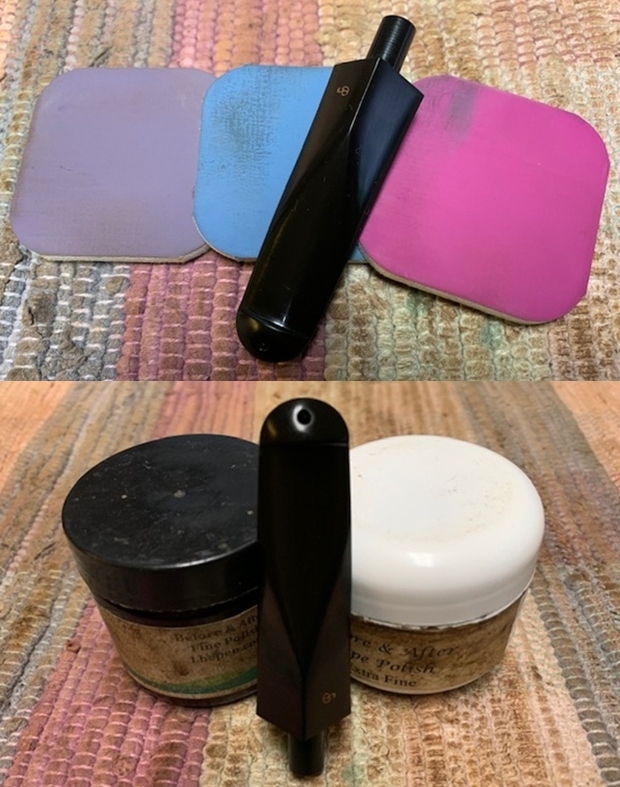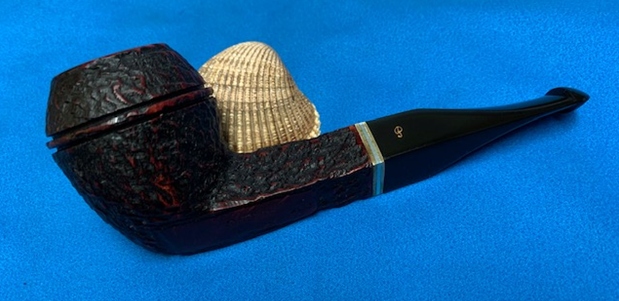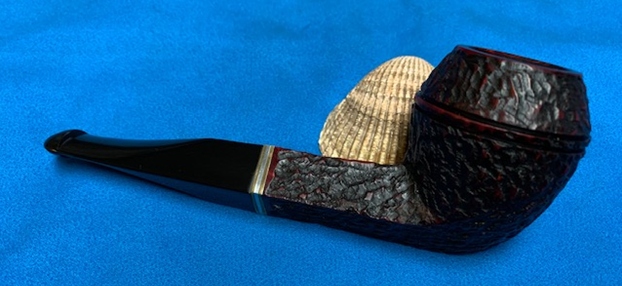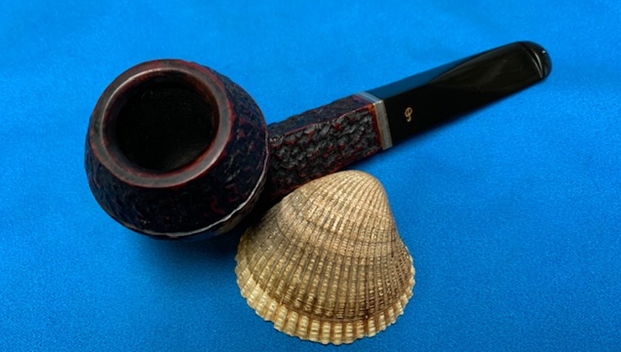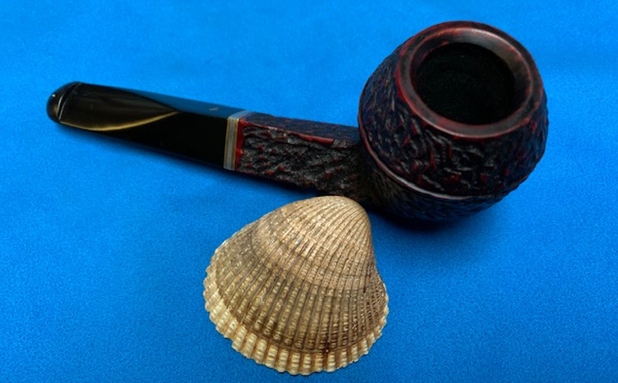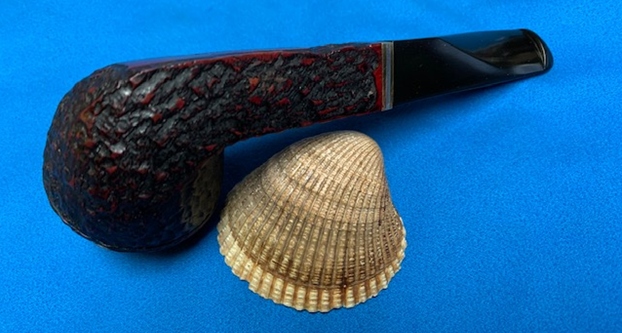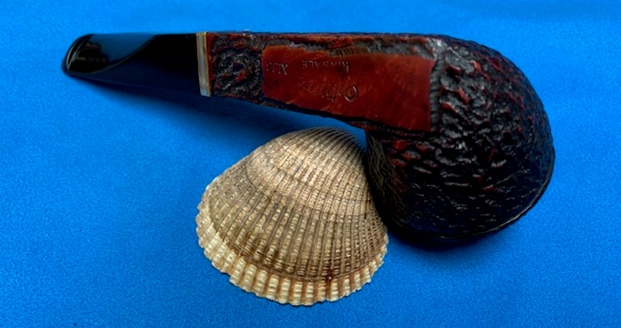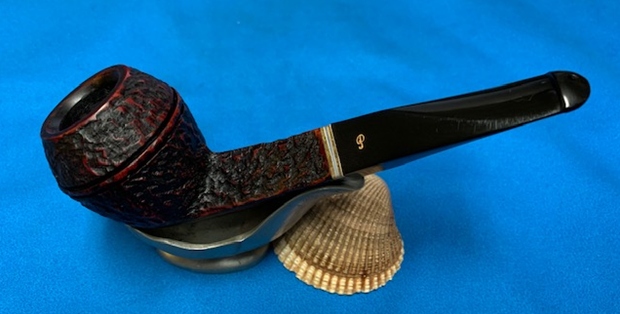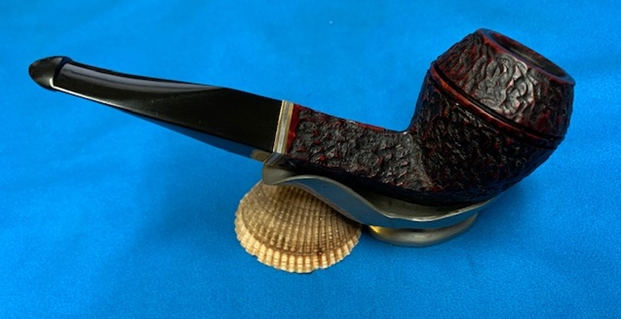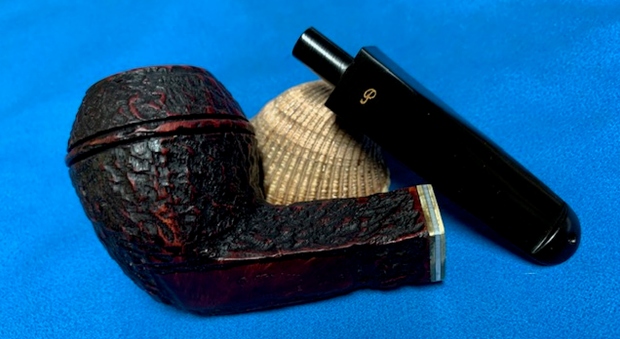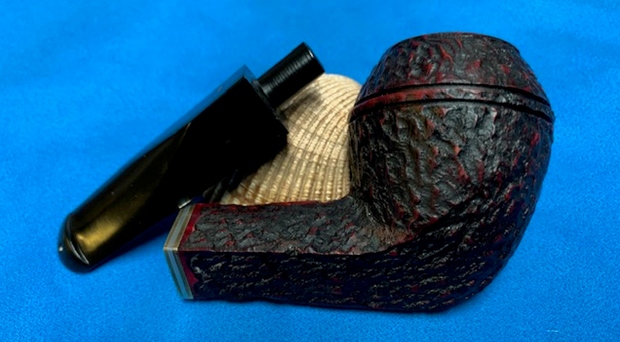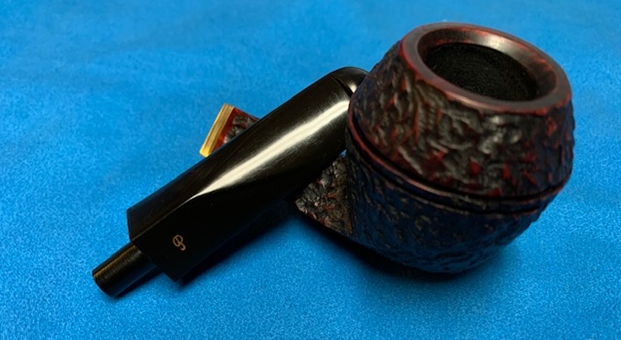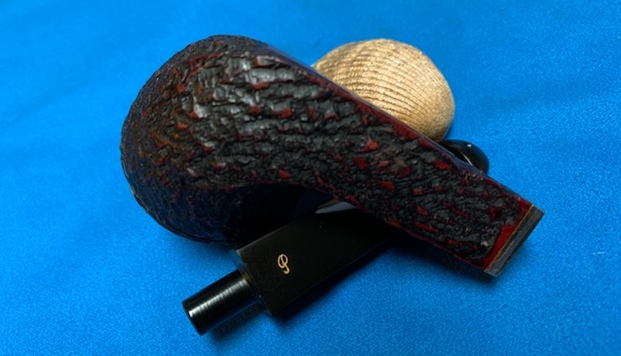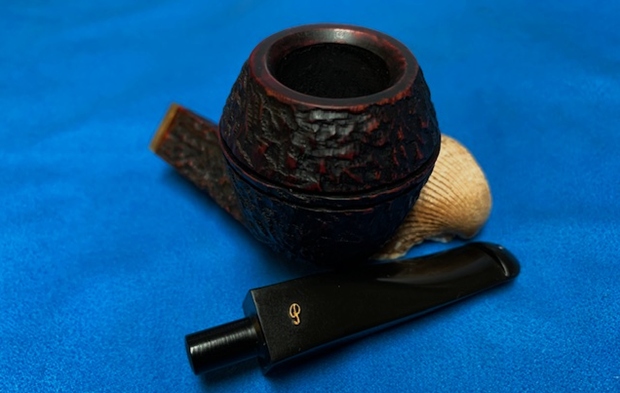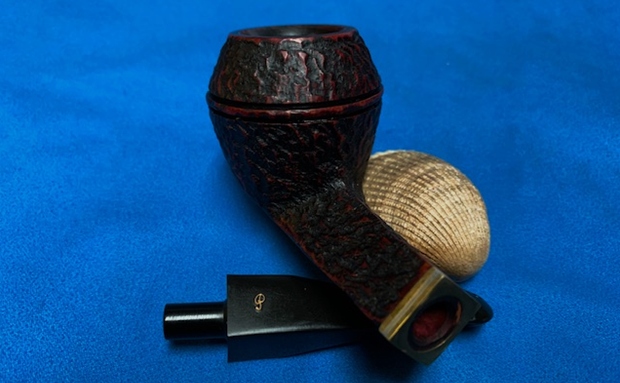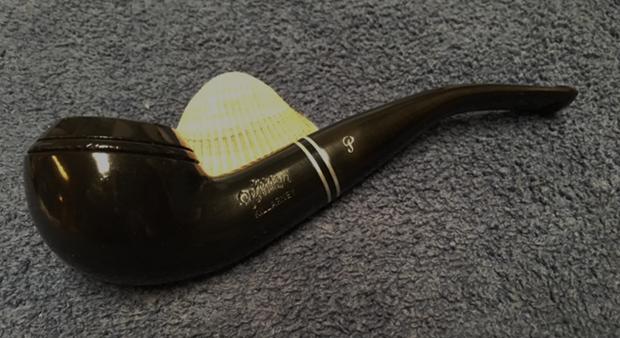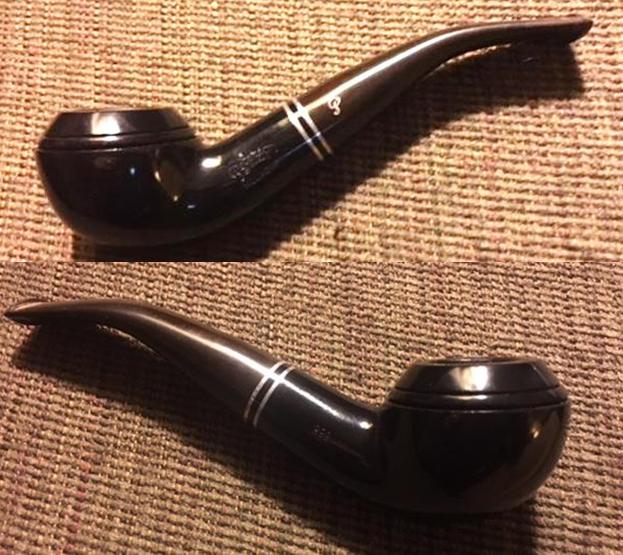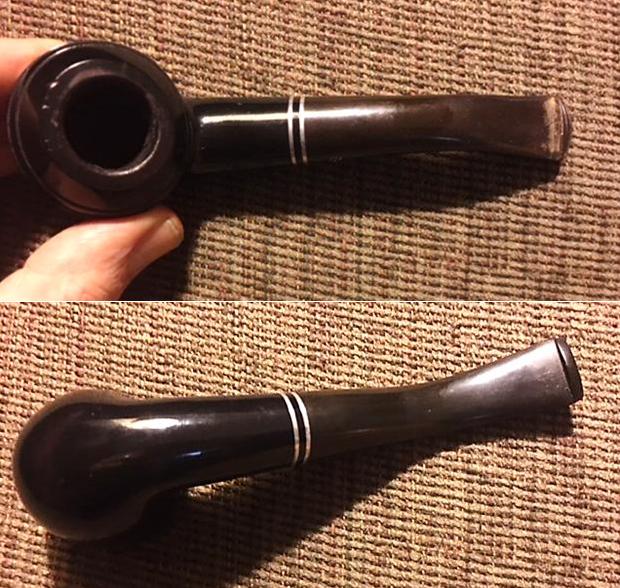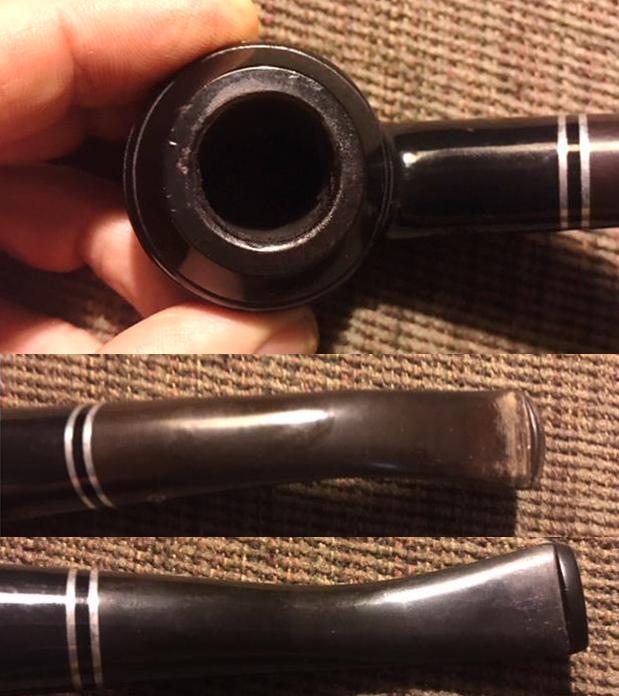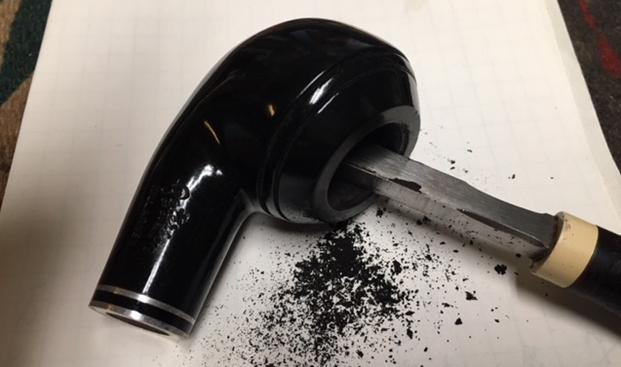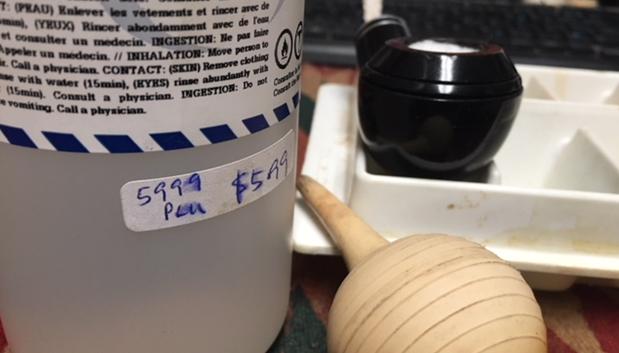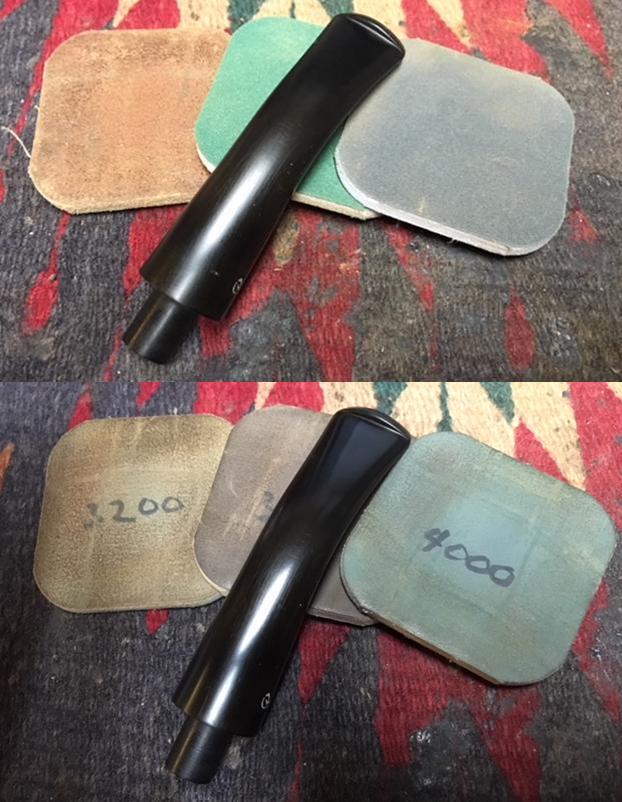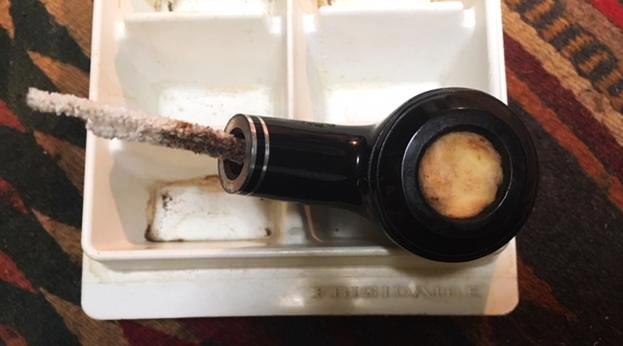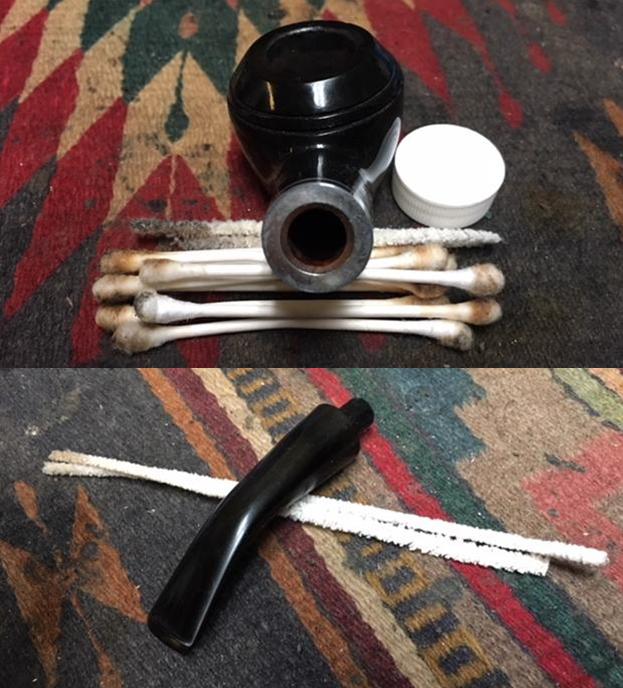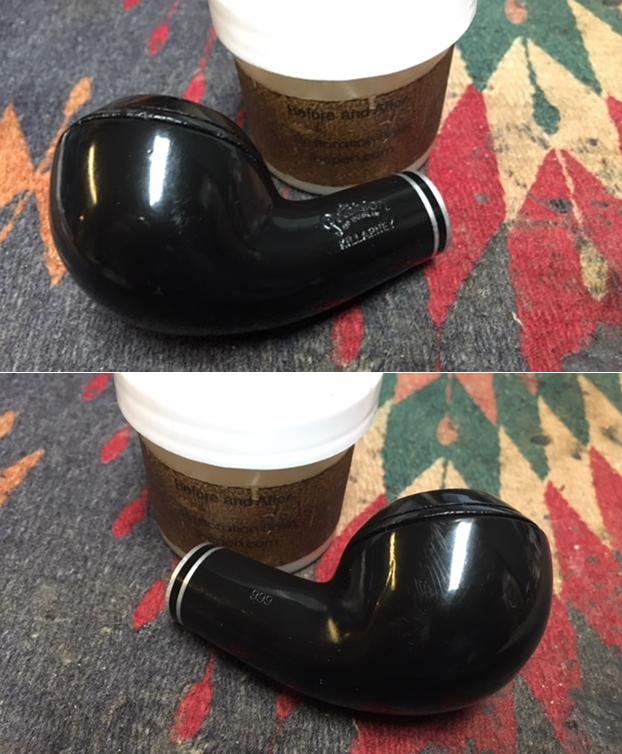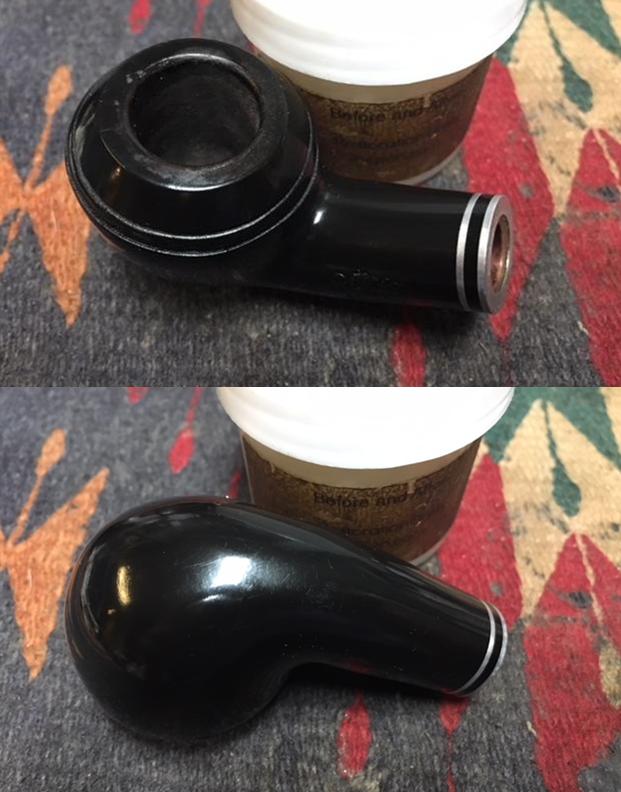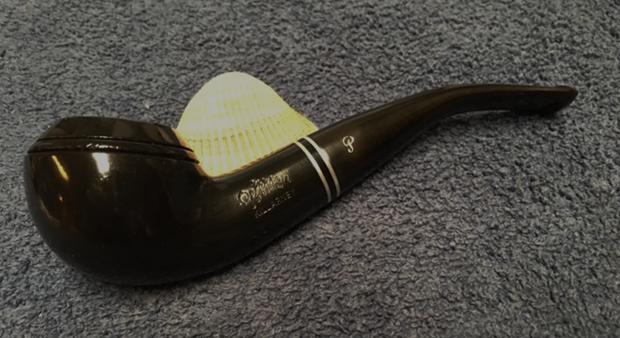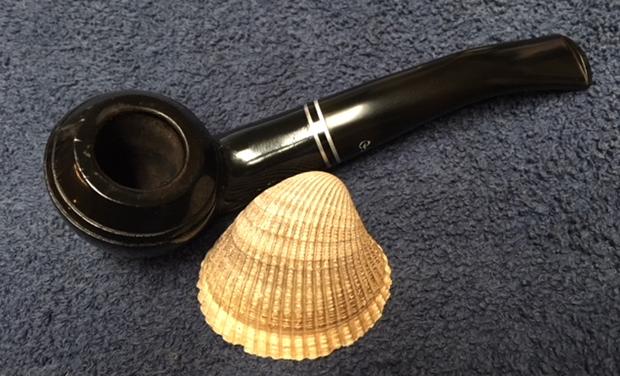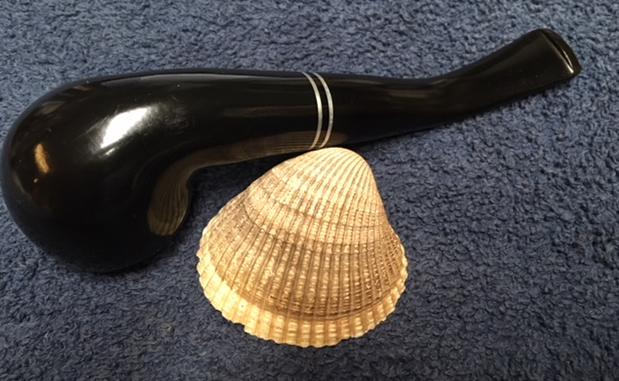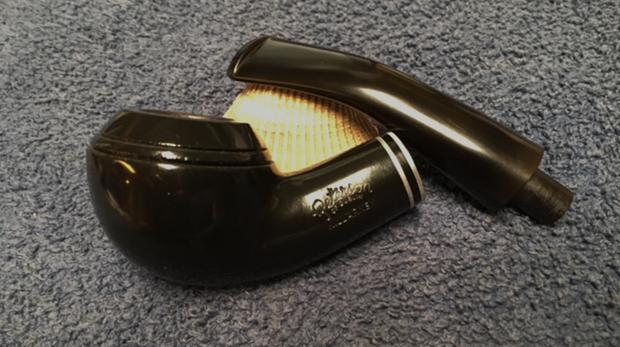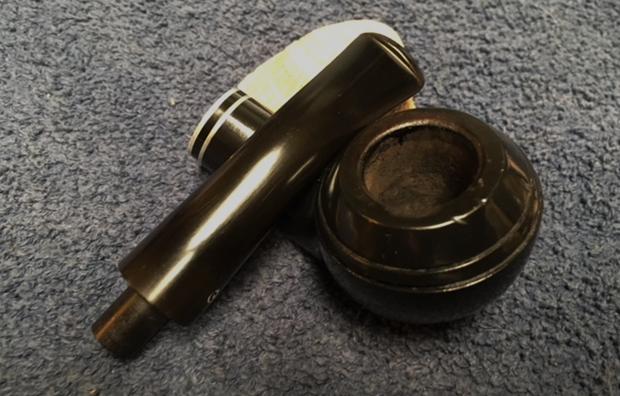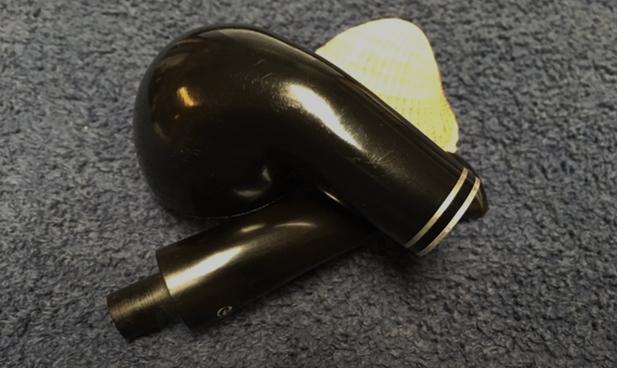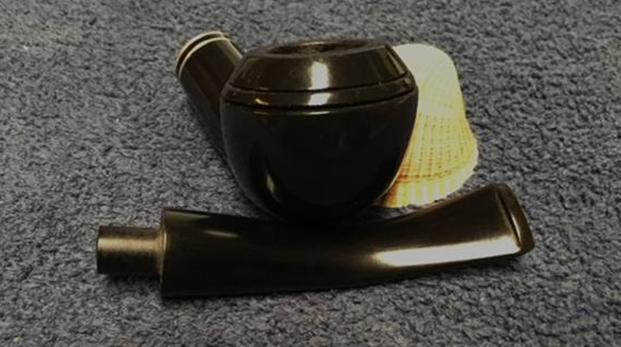Blog by Steve Laug
 In January Jeff found out about an estate sale in Pocatello, Idaho, USA. It turned out that the sale was for a fellow Jeff and I had purchased pipes from in the past, Gene. He had been the owner of Outwest Tobacco in Pocatello (long closed now) and I bought tobacco and other smoking items from him in the past. As I think about it now, it seems that I had known Gene for over 30 years Jeff and I had been to his home and enjoyed coffee and a few pipes together. I have no idea how many pipes we bought on those visits as well as to the antique shop of his daughter. I know that there were many pipes. When we heard that it was Gene’s personal collection that was for sale and that he had passed away we decided for Jeff to go to the house and have a look. He went on January 25, 2024 to scope it out as we had seen his personal collection of pipes and there were definitely some among those well smoked old warriors that would be great to pick up. Perhaps there would even be one that could join my own collection in memory of Gene.
In January Jeff found out about an estate sale in Pocatello, Idaho, USA. It turned out that the sale was for a fellow Jeff and I had purchased pipes from in the past, Gene. He had been the owner of Outwest Tobacco in Pocatello (long closed now) and I bought tobacco and other smoking items from him in the past. As I think about it now, it seems that I had known Gene for over 30 years Jeff and I had been to his home and enjoyed coffee and a few pipes together. I have no idea how many pipes we bought on those visits as well as to the antique shop of his daughter. I know that there were many pipes. When we heard that it was Gene’s personal collection that was for sale and that he had passed away we decided for Jeff to go to the house and have a look. He went on January 25, 2024 to scope it out as we had seen his personal collection of pipes and there were definitely some among those well smoked old warriors that would be great to pick up. Perhaps there would even be one that could join my own collection in memory of Gene.
Jeff went to the house and looked through the racks, pipe bags, tobacco both bulk and tinned as well as a variety of pipes. All the pipes were well smoked and needed serious cleaning. One the pipes he picked up was this Peterson of Dublin Aran with a black vulcanite taper stem. It was very dirty and was a natural coloured pipe when it started. The smooth finish around the bowl was dirty and had hand oils ground into the sides and shank. The bowl had a thick cake that overflowed in lava onto the rim edge and top of the bowl. The stem was vulcanite and taper style. It was very dirty and had the marks of a rubber Softee Bit on the end. It had become discoloured and there was a line where the debris from smoking had accumulated along the edge and under the bit protector. There were light tooth marks or chatter. The pipe was stamped on the left side of the shank and read Peterson [arched over] of Dublin [over] Aran and was clear and readable. On the right side of the shank it had the shape number that read 106. The polished nickel band on the shank was turned to the left too far and was stamped K&P [over] Peterson. Jeff took photos of the pipe so I could have a sense of what it looked like before he started his work on it. Jeff took photos of the stem surfaces and the bowl and rim to give a sense of condition of the pipe. You can see the thick cake in bowl and the lava overflow on the edges and rim top of the bowl. It is had to know if there is any damage as the cake and lava is quite thick. The inner edge of the rim showed nicks and damage. The stem surface is very dirty and you can see the area on the end of the stem where the Softee Bit had protected it from chewing but had left it dirty and discoloured.
Jeff took photos of the stem surfaces and the bowl and rim to give a sense of condition of the pipe. You can see the thick cake in bowl and the lava overflow on the edges and rim top of the bowl. It is had to know if there is any damage as the cake and lava is quite thick. The inner edge of the rim showed nicks and damage. The stem surface is very dirty and you can see the area on the end of the stem where the Softee Bit had protected it from chewing but had left it dirty and discoloured.

 He also took photos of the sides of the bowl and the heel to show the interesting grain that went around the bowl. The grain is beautiful and the polished nickel band on the shank end is quite nice. You can see the oils and debris on the bowl sides.
He also took photos of the sides of the bowl and the heel to show the interesting grain that went around the bowl. The grain is beautiful and the polished nickel band on the shank end is quite nice. You can see the oils and debris on the bowl sides. 
 He took photos of the stamping on the sides of the shank. It is clear and readable as noted above. The stamping on the nickel band is also very readable.
He took photos of the stamping on the sides of the shank. It is clear and readable as noted above. The stamping on the nickel band is also very readable.
 I turned to “The Peterson Pipe” by Mark Irwin and Gary Malmberg to get some background on the Aran line. On page 294 it had the following information.
I turned to “The Peterson Pipe” by Mark Irwin and Gary Malmberg to get some background on the Aran line. On page 294 it had the following information.
Aran (1965-) First issue of line described as “handhewn” (rusticated) with black semi-matte finish, in P-lip and fishtail mouthpiece. Second issue 1975, red sandblast, XL shapes. Third issue circa ’97, gold hot-foil P stamped on the mouthpiece, brown semi-matte smooth finish, no band. Fourth issue after 2010, with nickel band, no P stamped on the mouthpiece. Mounted and unmounted versions are available concurrently.
I knew that I was dealing with an Aran from the Fourth Issue of the Aran line that came out after 2010 because of the nickel band and unstamped stem. As such it was a newer pipe. Now it was time to work on the pipe. (Applicable information noted in red above.)
Now it was my turn to work on the pipe. Jeff had done an amazing cleanup of the pipe. He reamed the light cake with a PipNet reamer and cleaned up that with a Savinelli Fitsall Pipe Knife. He scrubbed the internals of the bowl and stem with alcohol, cotton swabs and pipe cleaners. He scrubbed the externals with undiluted Murphy’s Oil Soap and rinsed the bowl off with running water. He soaked the stem in Briarville’s Pipe stem Deoxidizer and once it had soaked rinsed it off with warm water to remove the residual solution. He dried it off and rubbed it down to remove any oxidation that was still on the stem. The pipe looked very good when I received it. 
 I took a photo of the rim top to show the condition. You can see the damage to the rim top and inner edge of the bowl. The rim top is rough to the touch and the edge was nicked and cut in many places from a life of poor reaming. The stem came out looking quite good. There were light tooth marks in the surface that I think will polish out with sanding.
I took a photo of the rim top to show the condition. You can see the damage to the rim top and inner edge of the bowl. The rim top is rough to the touch and the edge was nicked and cut in many places from a life of poor reaming. The stem came out looking quite good. There were light tooth marks in the surface that I think will polish out with sanding.  I took photos of the sides of the shank to show the stamping. The photos clearly shows the stamping on the shank and the band. It is actually more readable in person. I removed the stem from the shank and took a photo of the pipe parts to show what I was working with. I also took photos of the pipe with the longer Churchwarden stem in place. It is a nice looking pipe.
I took photos of the sides of the shank to show the stamping. The photos clearly shows the stamping on the shank and the band. It is actually more readable in person. I removed the stem from the shank and took a photo of the pipe parts to show what I was working with. I also took photos of the pipe with the longer Churchwarden stem in place. It is a nice looking pipe.
 I started my work on the pipe by addressing the damage to the rim top and inner edge of the bowl. I used a folded piece of 220 sandpaper to smooth out the roughness of the rim edge. I then used a wooden sphere and 220 grit sandpaper to smooth out the top and give the edge an even bevel.
I started my work on the pipe by addressing the damage to the rim top and inner edge of the bowl. I used a folded piece of 220 sandpaper to smooth out the roughness of the rim edge. I then used a wooden sphere and 220 grit sandpaper to smooth out the top and give the edge an even bevel.
 I sanded the rim top and edges with 320-3500 grit sanding pads. I wiped it down after each sanding pad. The rim top began to really look good and take on a shine. The sanding marks were well blended in by the final pad.
I sanded the rim top and edges with 320-3500 grit sanding pads. I wiped it down after each sanding pad. The rim top began to really look good and take on a shine. The sanding marks were well blended in by the final pad. I polished the briar with micromesh sanding pads. I dry sanded it with 1500-12000 grit sanding pads and wiped the bowl down after each pad with a damp cloth. By the final pads the briar really had a shine.
I polished the briar with micromesh sanding pads. I dry sanded it with 1500-12000 grit sanding pads and wiped the bowl down after each pad with a damp cloth. By the final pads the briar really had a shine.




 The band was twisted to the bottom left side with the stamping not visible on top or bottom or even on the sides. I tried to turn it and it would not move. I tried heating the band with no success so I put it in the freezer for about 10 minutes and when I took it out it turned easily. I moved it to the top of the shank and let it set. I like the looks much better.
The band was twisted to the bottom left side with the stamping not visible on top or bottom or even on the sides. I tried to turn it and it would not move. I tried heating the band with no success so I put it in the freezer for about 10 minutes and when I took it out it turned easily. I moved it to the top of the shank and let it set. I like the looks much better. I rubbed the briar down with Before & After Restoration Balm. I worked it into the surface of the briar with my fingertips. The product works to clean, enliven and preserve the briar. I let it sit for 10 minutes then I buffed it with a cotton cloth to deepen the shine. The briar really comes alive with the balm.
I rubbed the briar down with Before & After Restoration Balm. I worked it into the surface of the briar with my fingertips. The product works to clean, enliven and preserve the briar. I let it sit for 10 minutes then I buffed it with a cotton cloth to deepen the shine. The briar really comes alive with the balm.

 I set aside the bowl and turned my attention to the stem. I sanded out the tooth damage with 320-3500 grit sanding pads. I wiped the stem down after each pad with a damp cloth. I was able to remove the damage and the stem looked better.
I set aside the bowl and turned my attention to the stem. I sanded out the tooth damage with 320-3500 grit sanding pads. I wiped the stem down after each pad with a damp cloth. I was able to remove the damage and the stem looked better. I touched up the P logo on the left side of the stem with white acrylic nail polish. Once it dried I used a 1500 grit micromesh sanding pad to remove the excess acrylic paint. The white acrylic that remained filled in the letter on the stem.
I touched up the P logo on the left side of the stem with white acrylic nail polish. Once it dried I used a 1500 grit micromesh sanding pad to remove the excess acrylic paint. The white acrylic that remained filled in the letter on the stem. I polished the vulcanite stem with micromesh sanding pads – 1500-12000 grit pads. I wiped it down with Obsidian Oil after each sanding pad. I used Before & After Pipe Polish – both Fine and Extra Fine to further polish the stem.
I polished the vulcanite stem with micromesh sanding pads – 1500-12000 grit pads. I wiped it down with Obsidian Oil after each sanding pad. I used Before & After Pipe Polish – both Fine and Extra Fine to further polish the stem.
 This Peterson of Dublin Aran 106 Billiard has a beautiful, reddish brown finish that highlights some beautiful grain. The shorter and longer polished stems add to the mix. I believe the stems are acrylic and have a rich shine to them. I put the stem back on the bowl and buffed the pipe with Blue Diamond on the buffing wheel being careful to not buff the stamping. I gave the bowl and the stems multiple coats of carnauba wax on the buffing wheel and followed that by buffing it with a clean buffing pad. I hand buffed the pipe with a microfiber cloth to deepen the shine. The finished Peterson of Dublin Aran 106 is quite stunning and feels great in my hand. Give the finished pipe a look in the photos below. The dimensions of the pipe with the two stems are Length: 6 inches, Height: 2 inches, Outside diameter of the bowl: 1 ¼ inches, Chamber diameter: 7/8 of an inch. The weight of the pipe is 1.76 ounces/50 grams. Thanks for walking through the restoration with me as I worked over another beautiful pipe. I am going to putting the pipe on the rebornpipes store in the Irish Pipe Makers Section. If you are interested in adding it to your collection let me know. Thanks for your time.
This Peterson of Dublin Aran 106 Billiard has a beautiful, reddish brown finish that highlights some beautiful grain. The shorter and longer polished stems add to the mix. I believe the stems are acrylic and have a rich shine to them. I put the stem back on the bowl and buffed the pipe with Blue Diamond on the buffing wheel being careful to not buff the stamping. I gave the bowl and the stems multiple coats of carnauba wax on the buffing wheel and followed that by buffing it with a clean buffing pad. I hand buffed the pipe with a microfiber cloth to deepen the shine. The finished Peterson of Dublin Aran 106 is quite stunning and feels great in my hand. Give the finished pipe a look in the photos below. The dimensions of the pipe with the two stems are Length: 6 inches, Height: 2 inches, Outside diameter of the bowl: 1 ¼ inches, Chamber diameter: 7/8 of an inch. The weight of the pipe is 1.76 ounces/50 grams. Thanks for walking through the restoration with me as I worked over another beautiful pipe. I am going to putting the pipe on the rebornpipes store in the Irish Pipe Makers Section. If you are interested in adding it to your collection let me know. Thanks for your time.
















